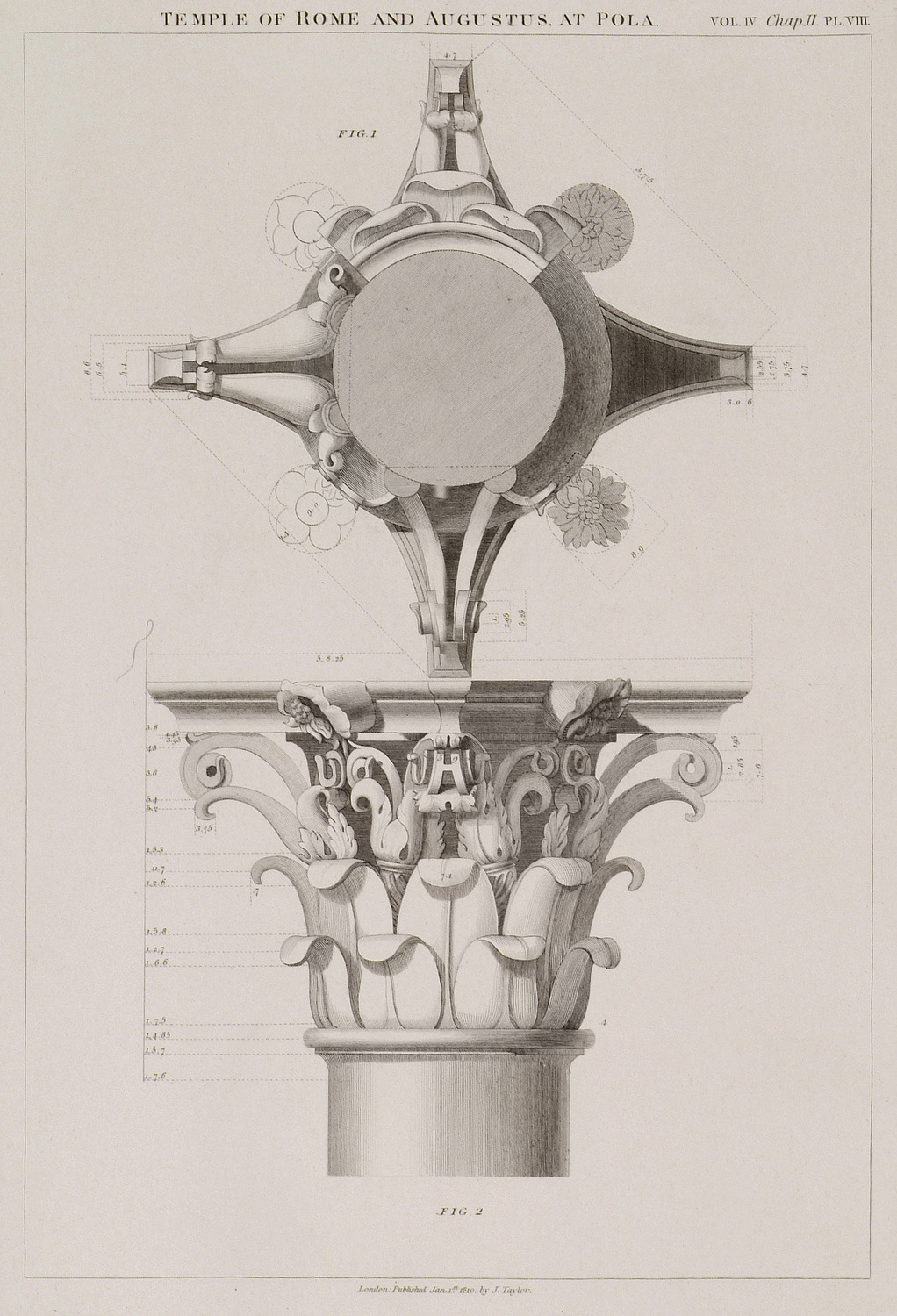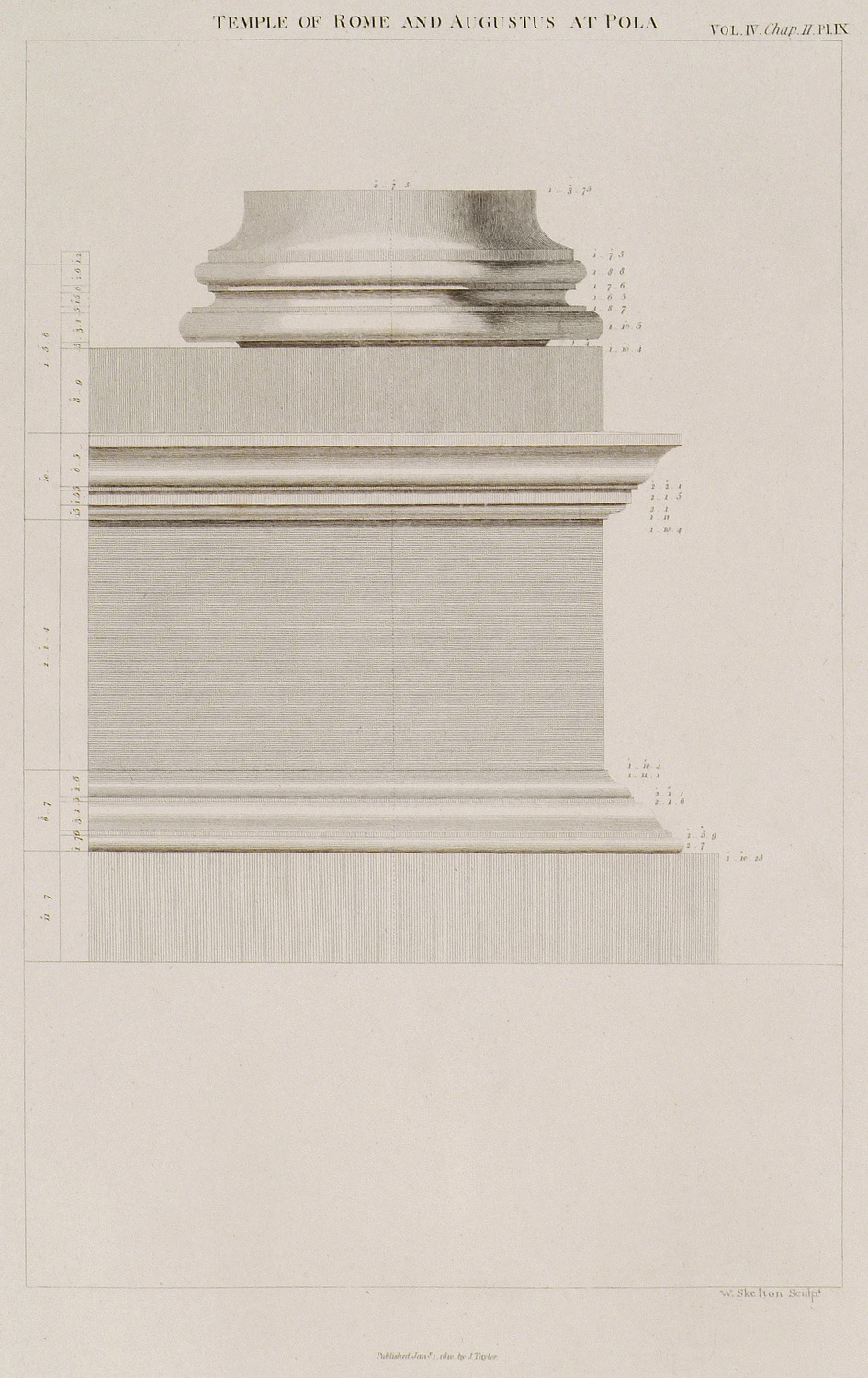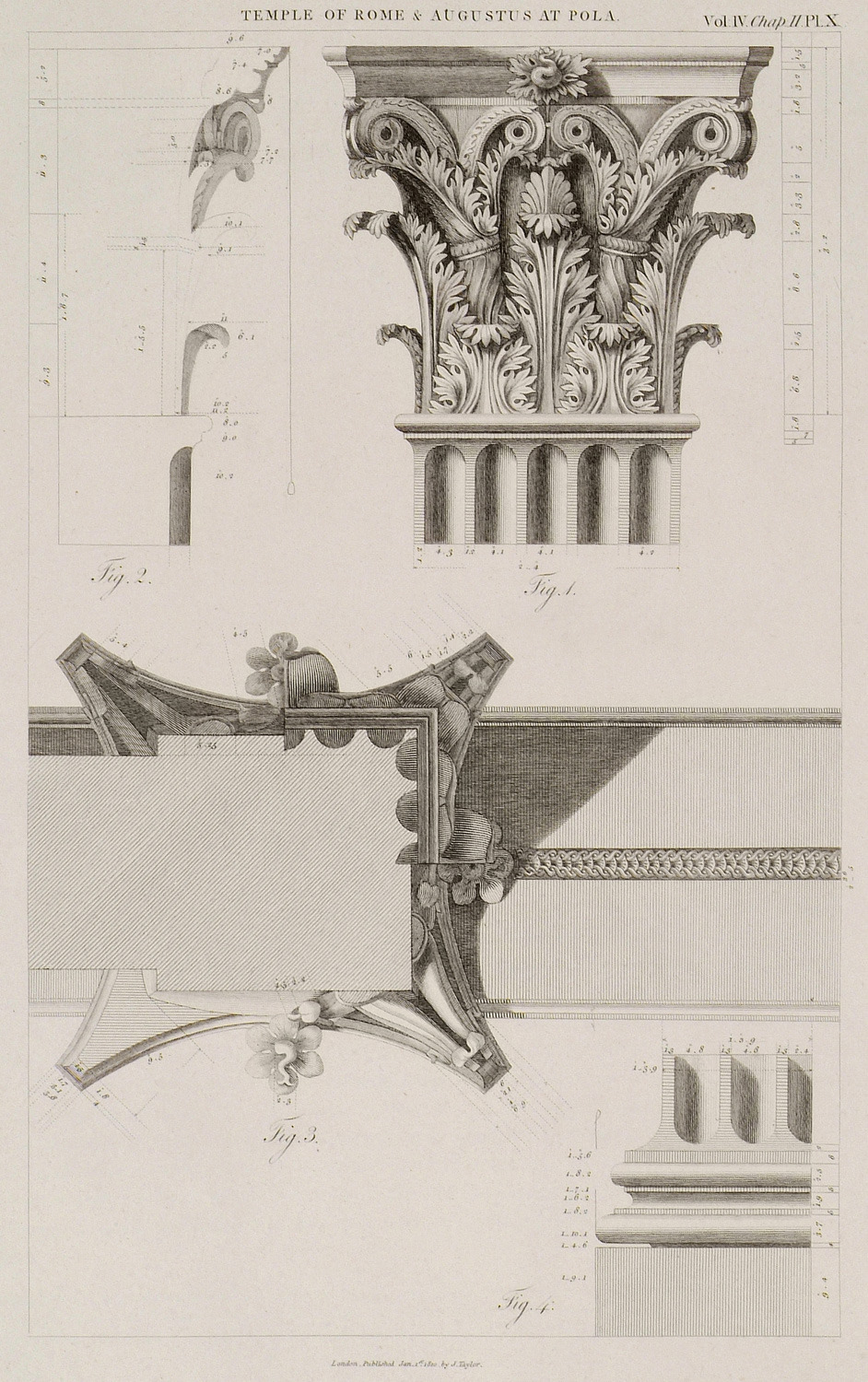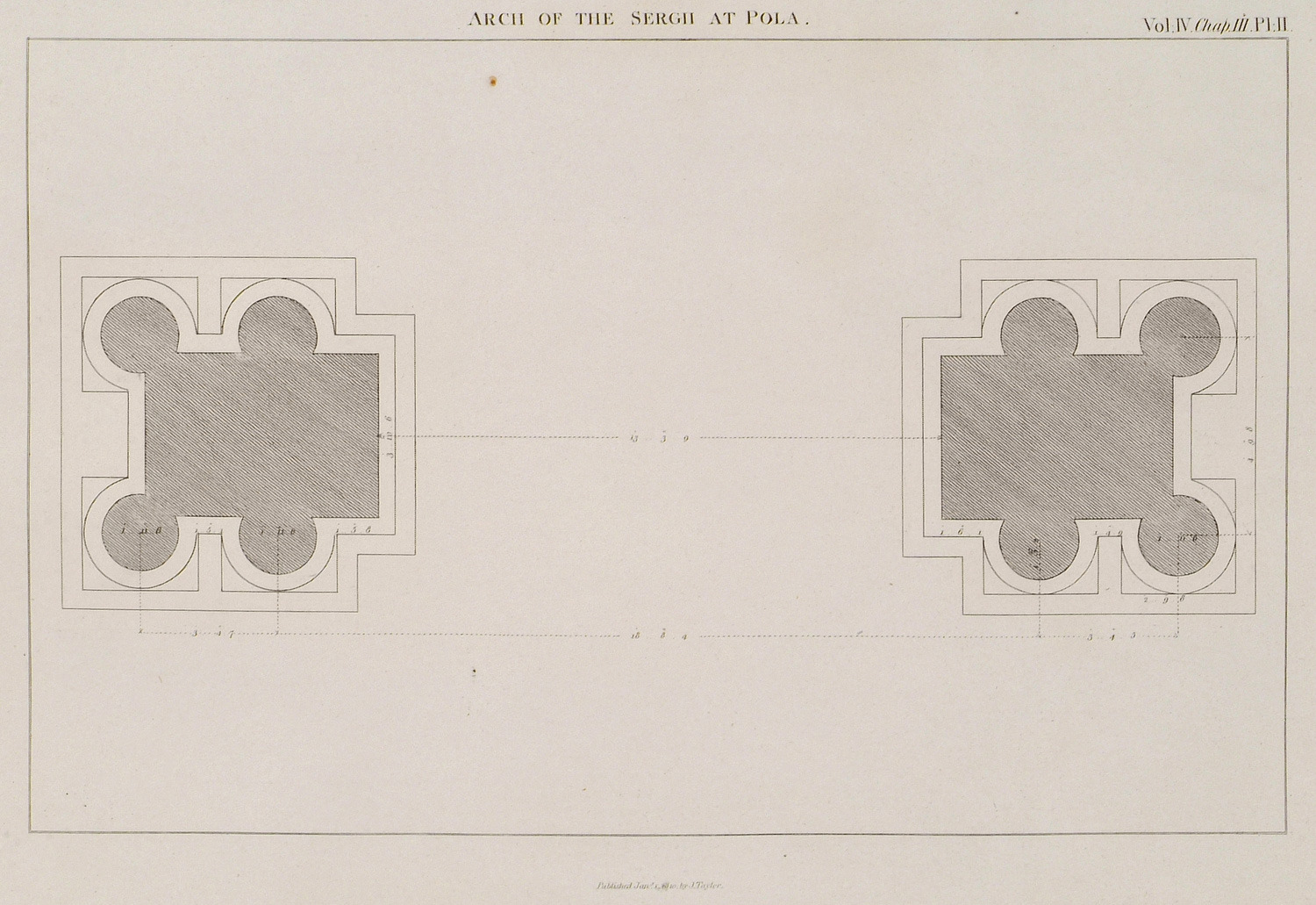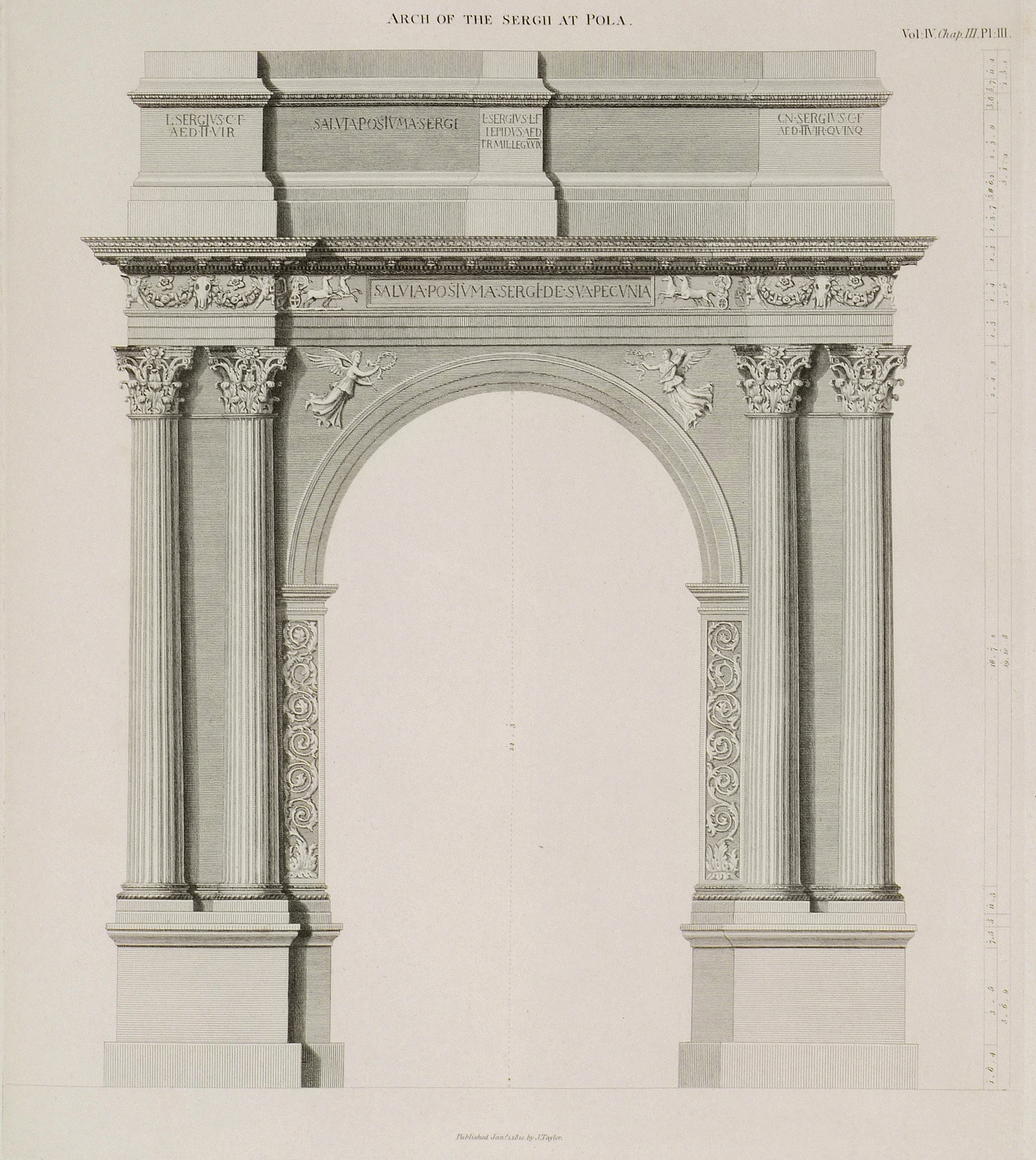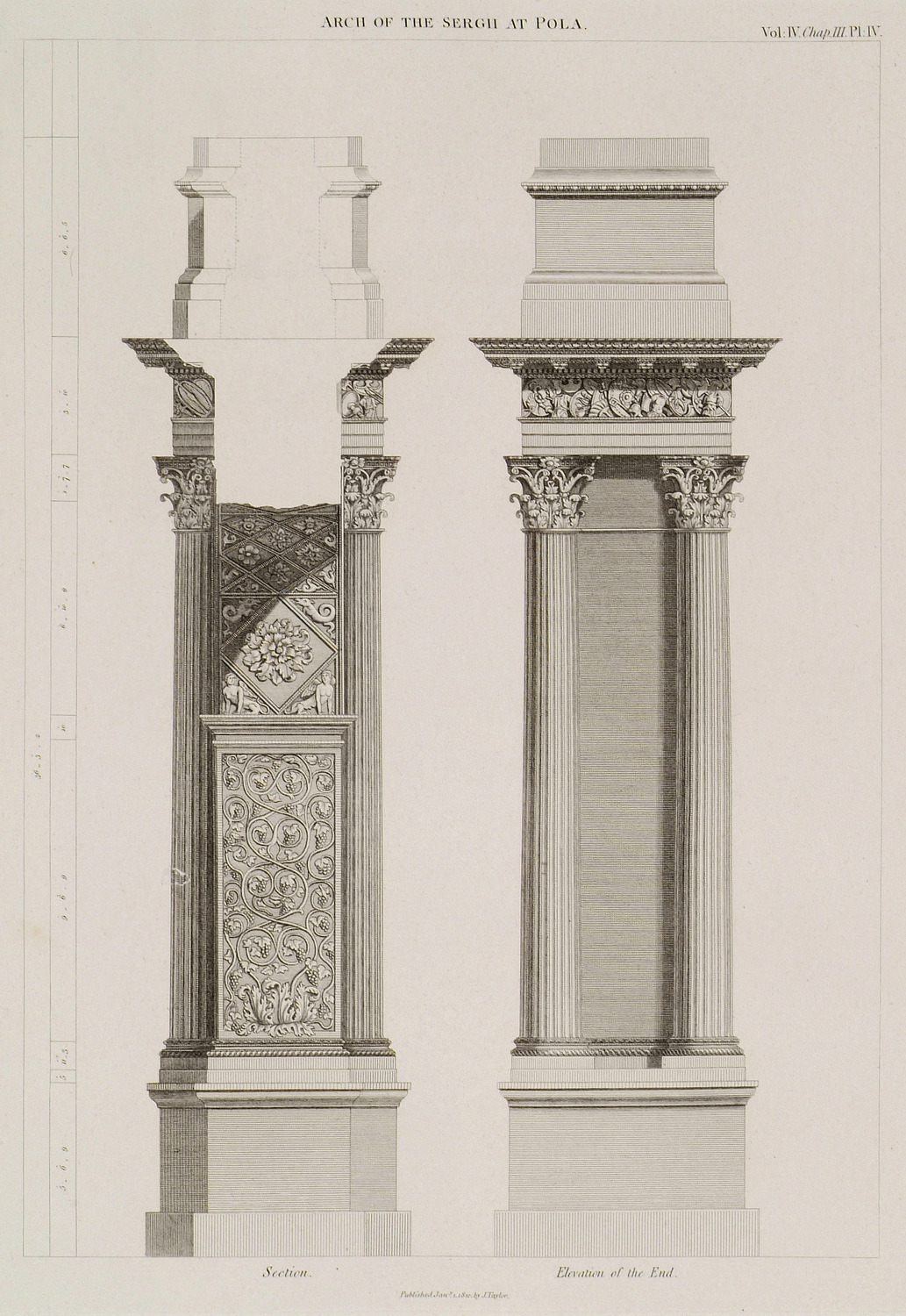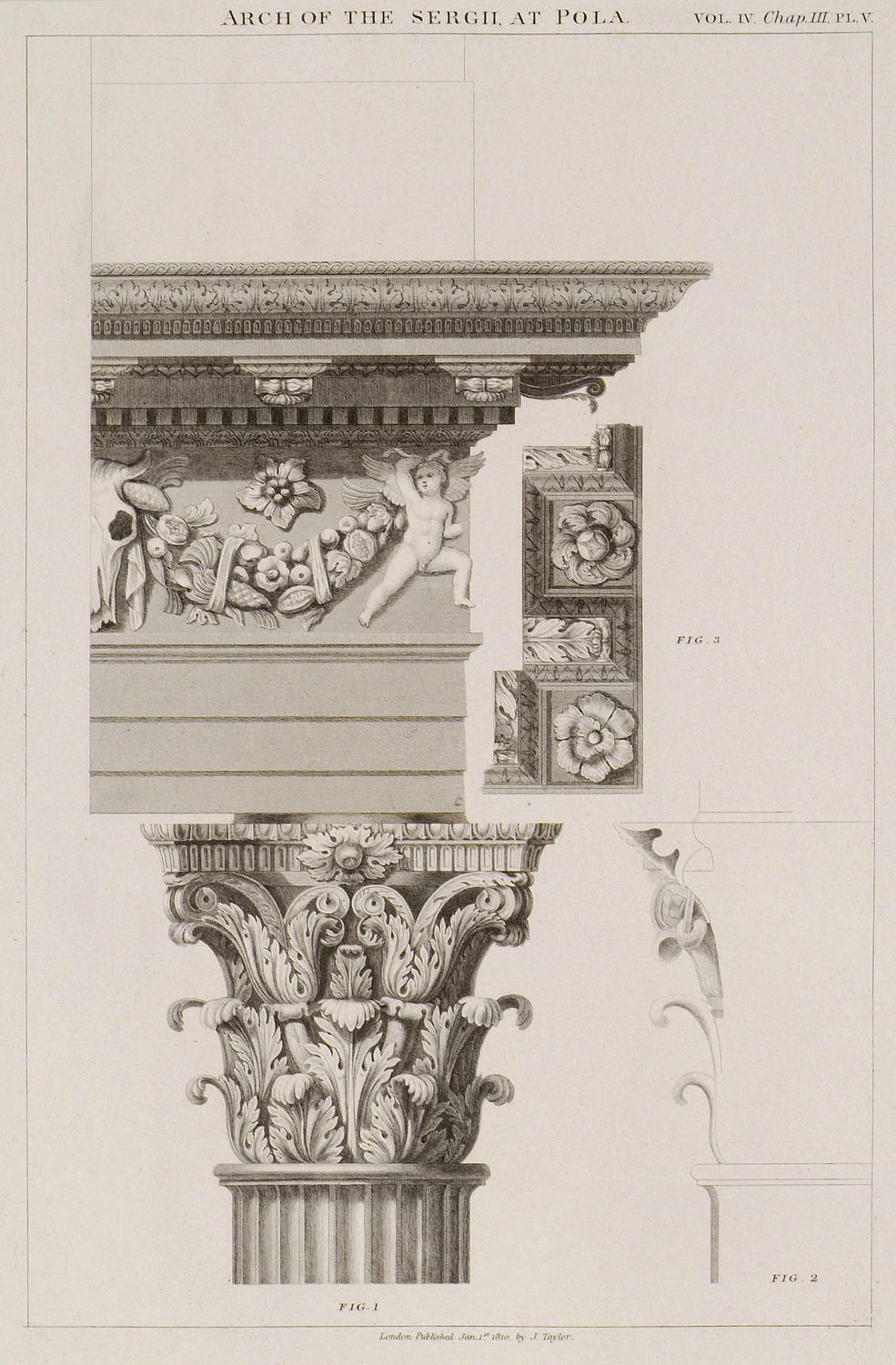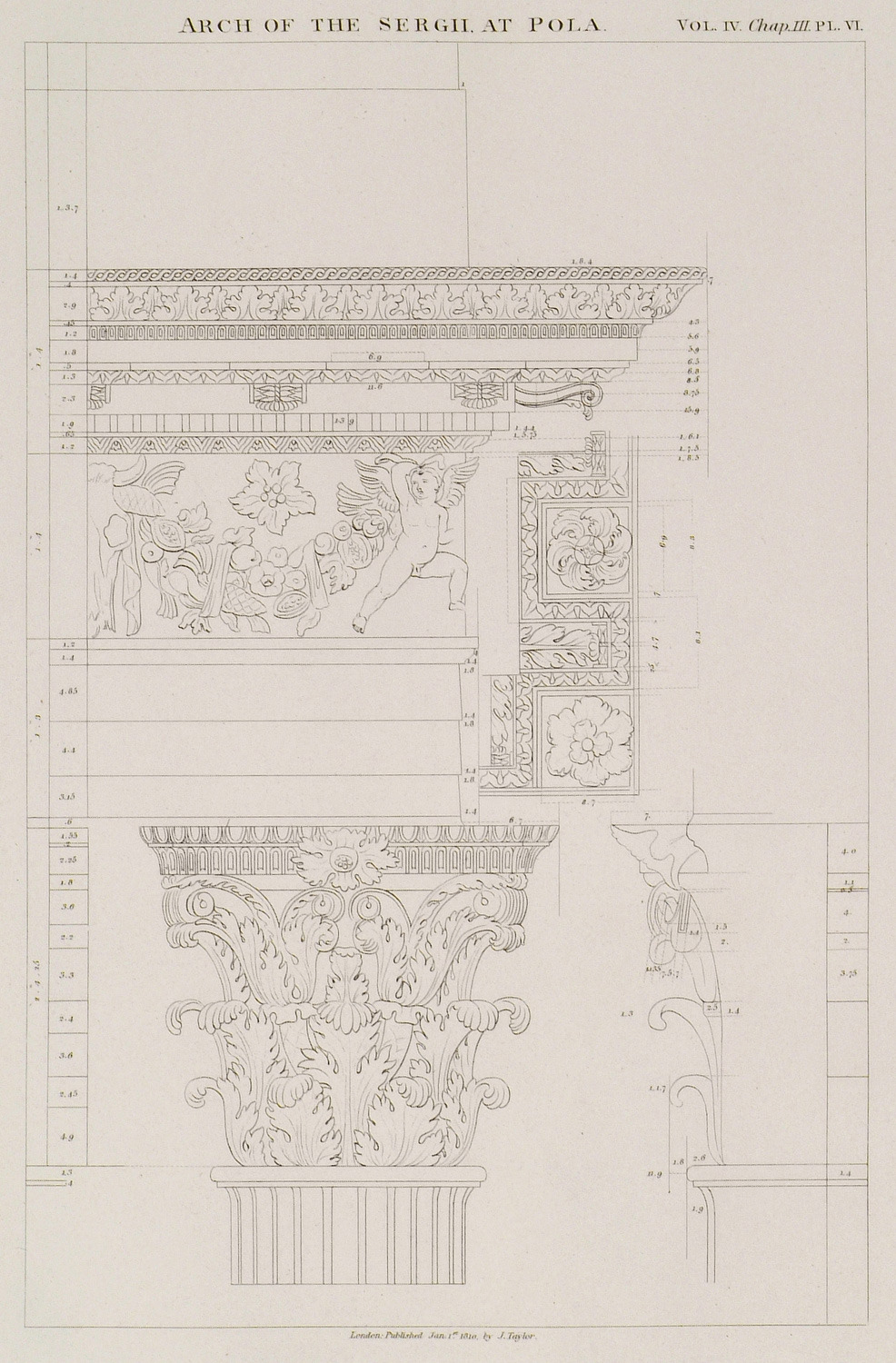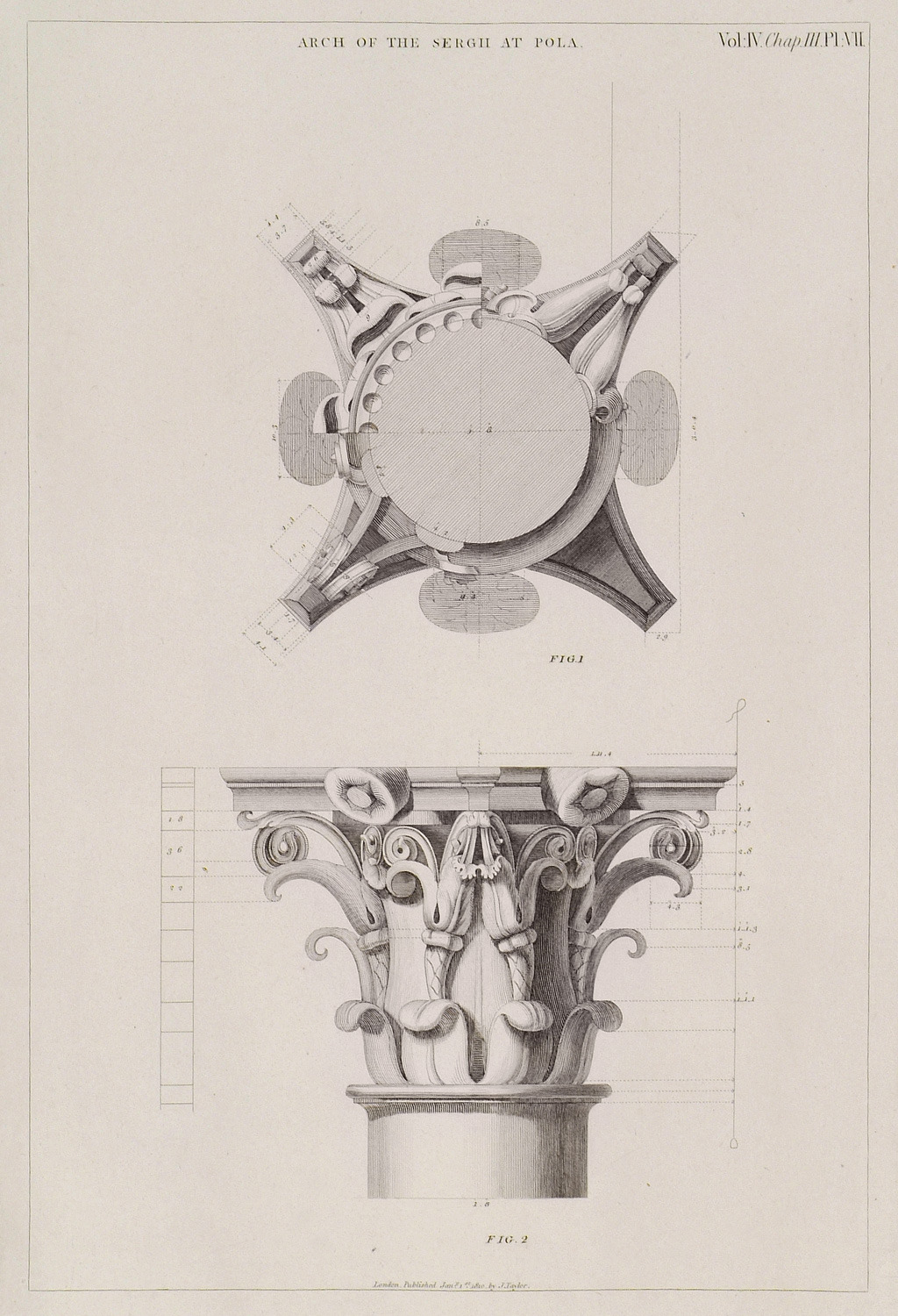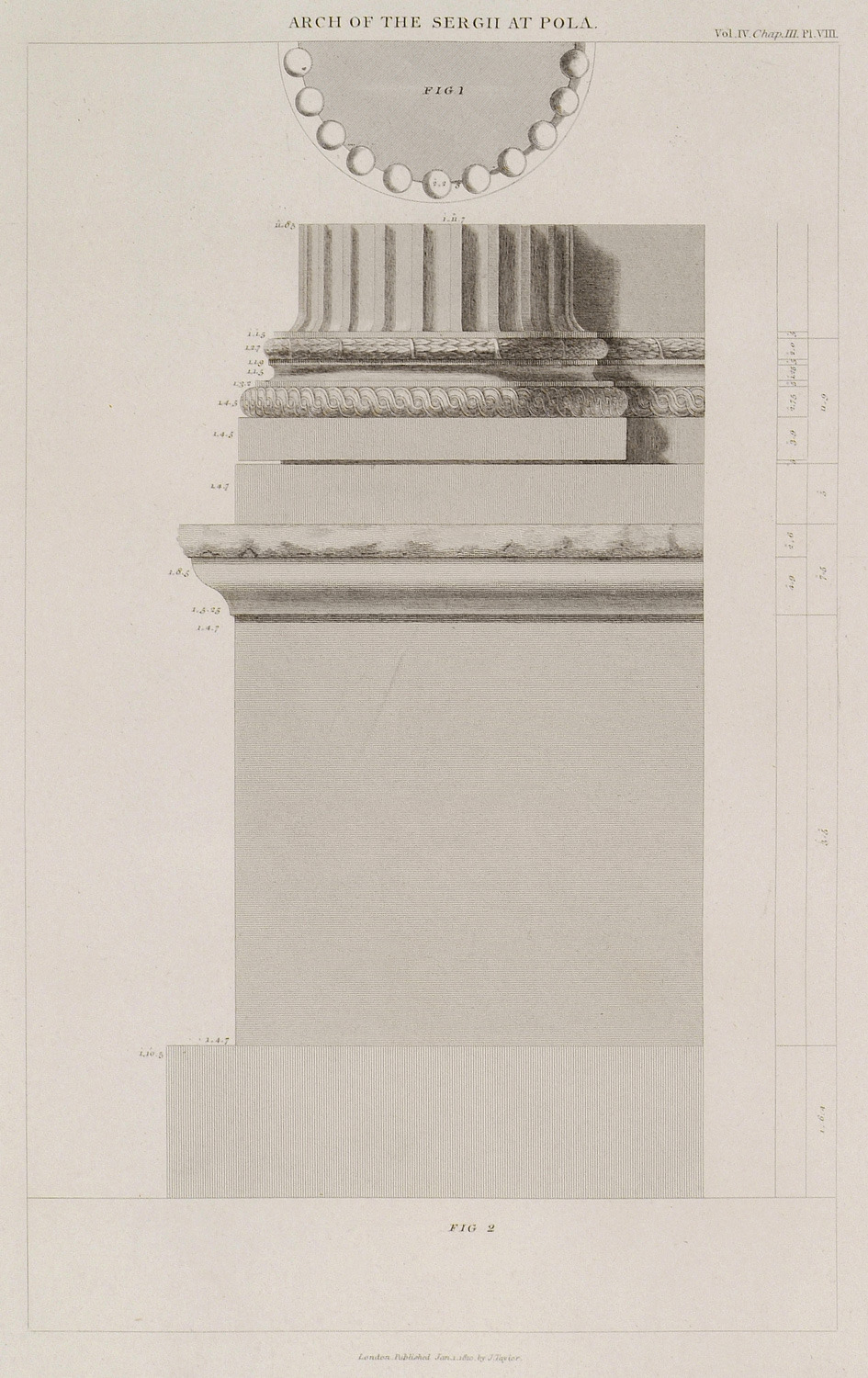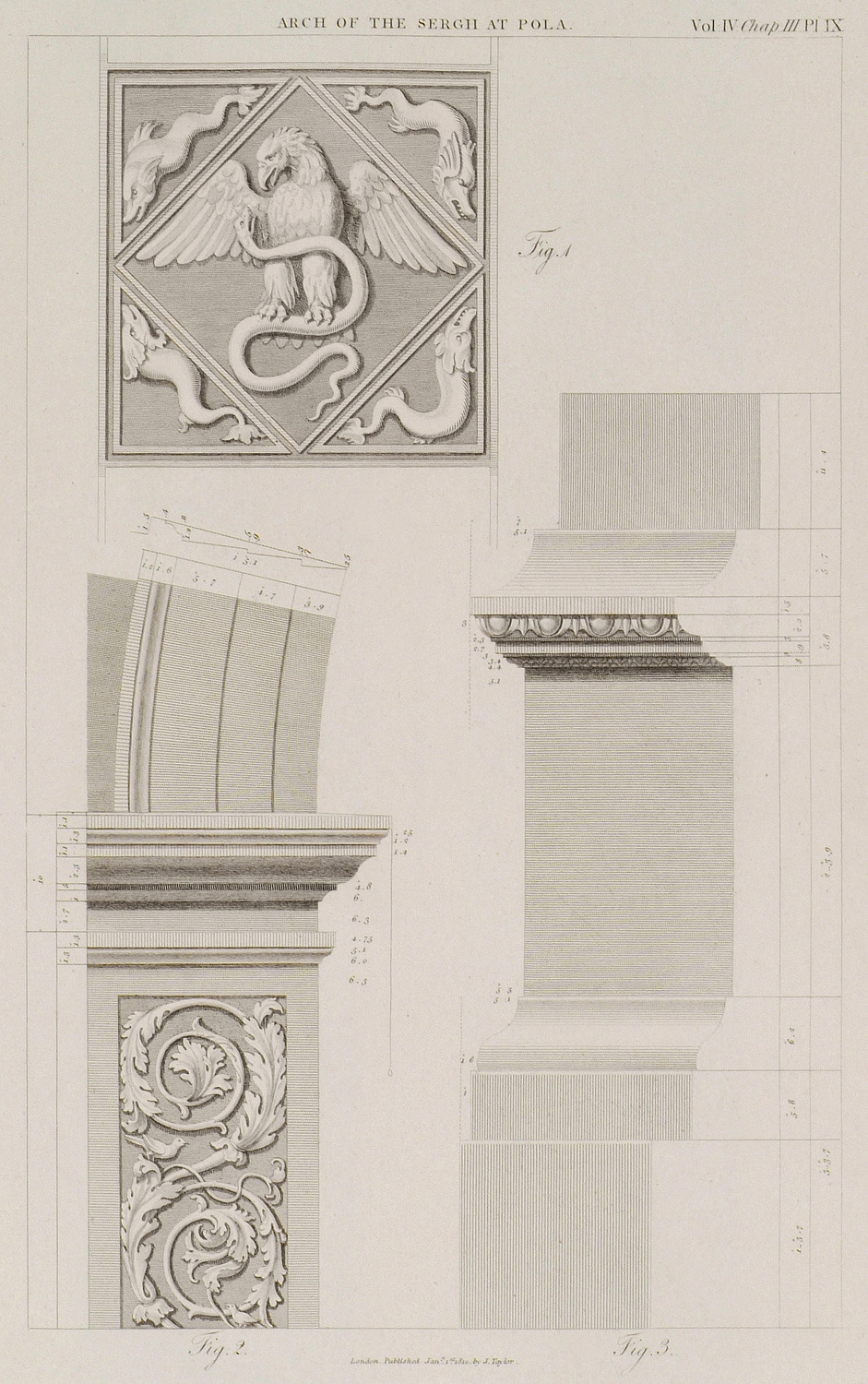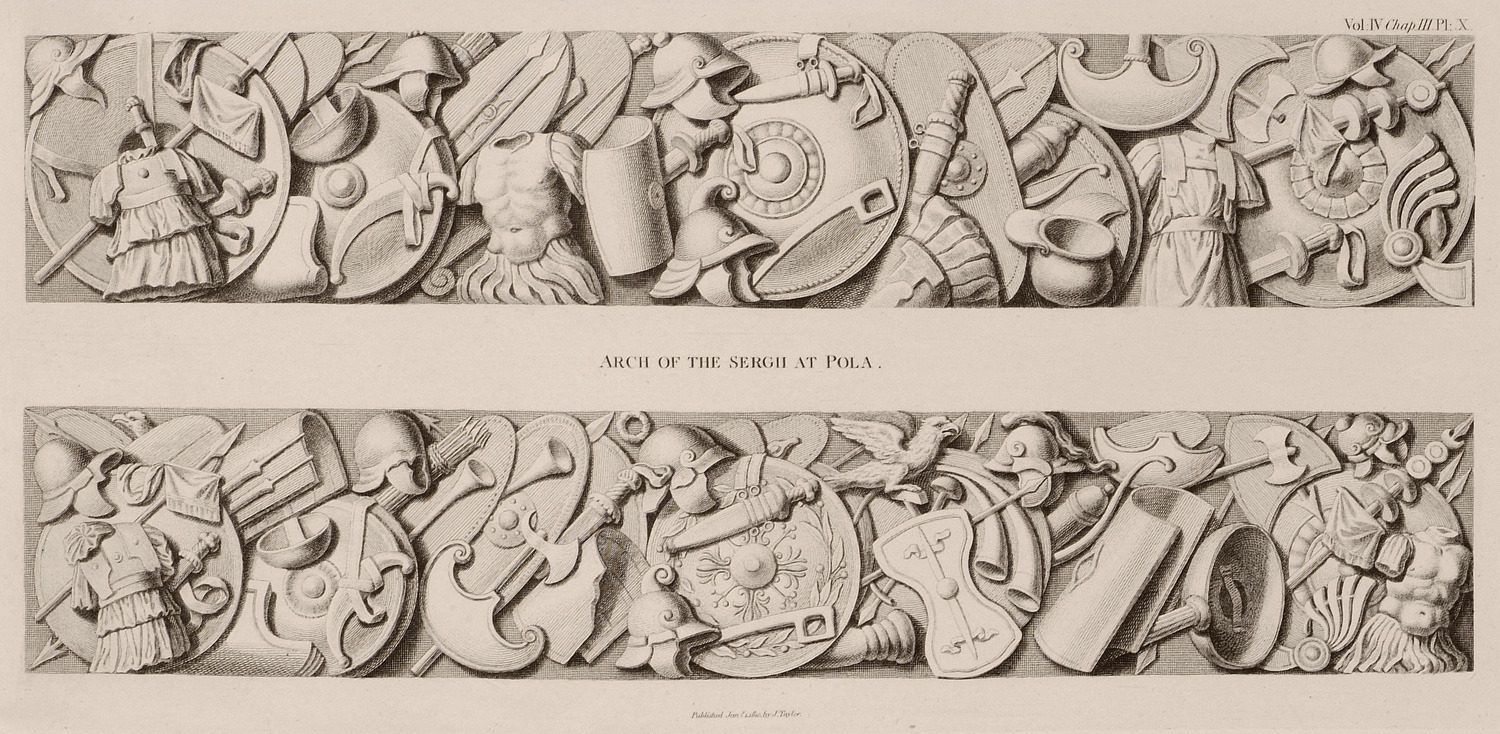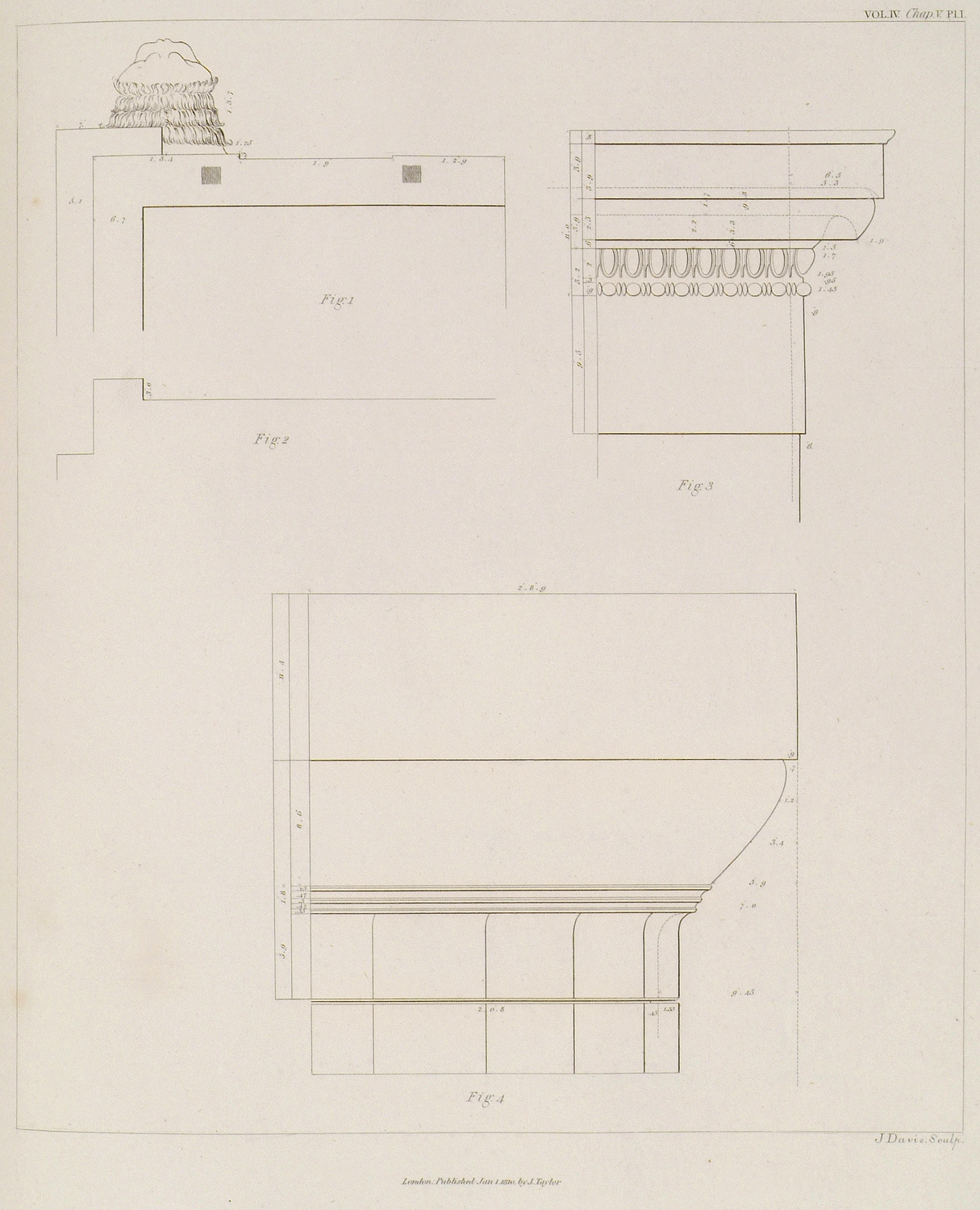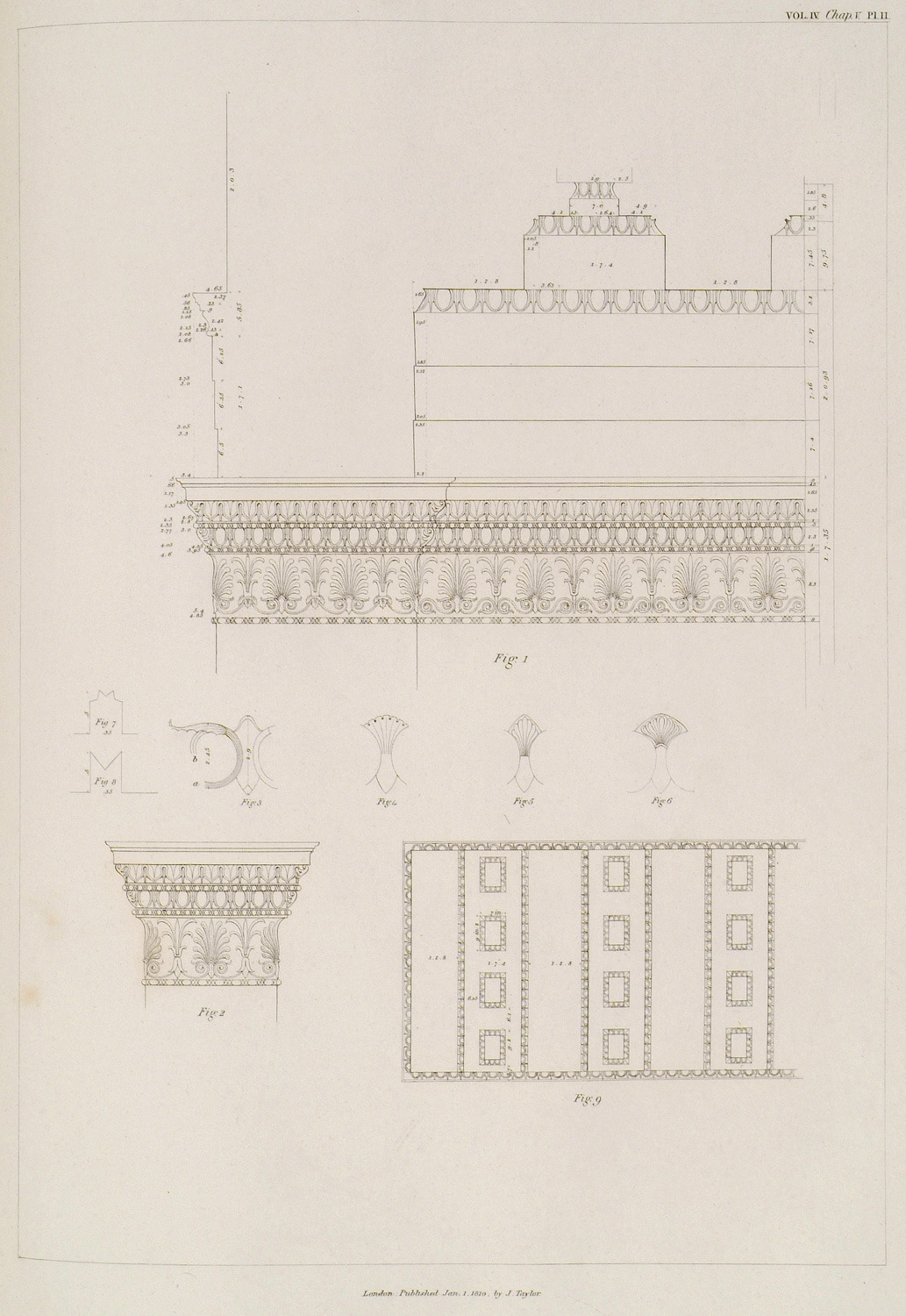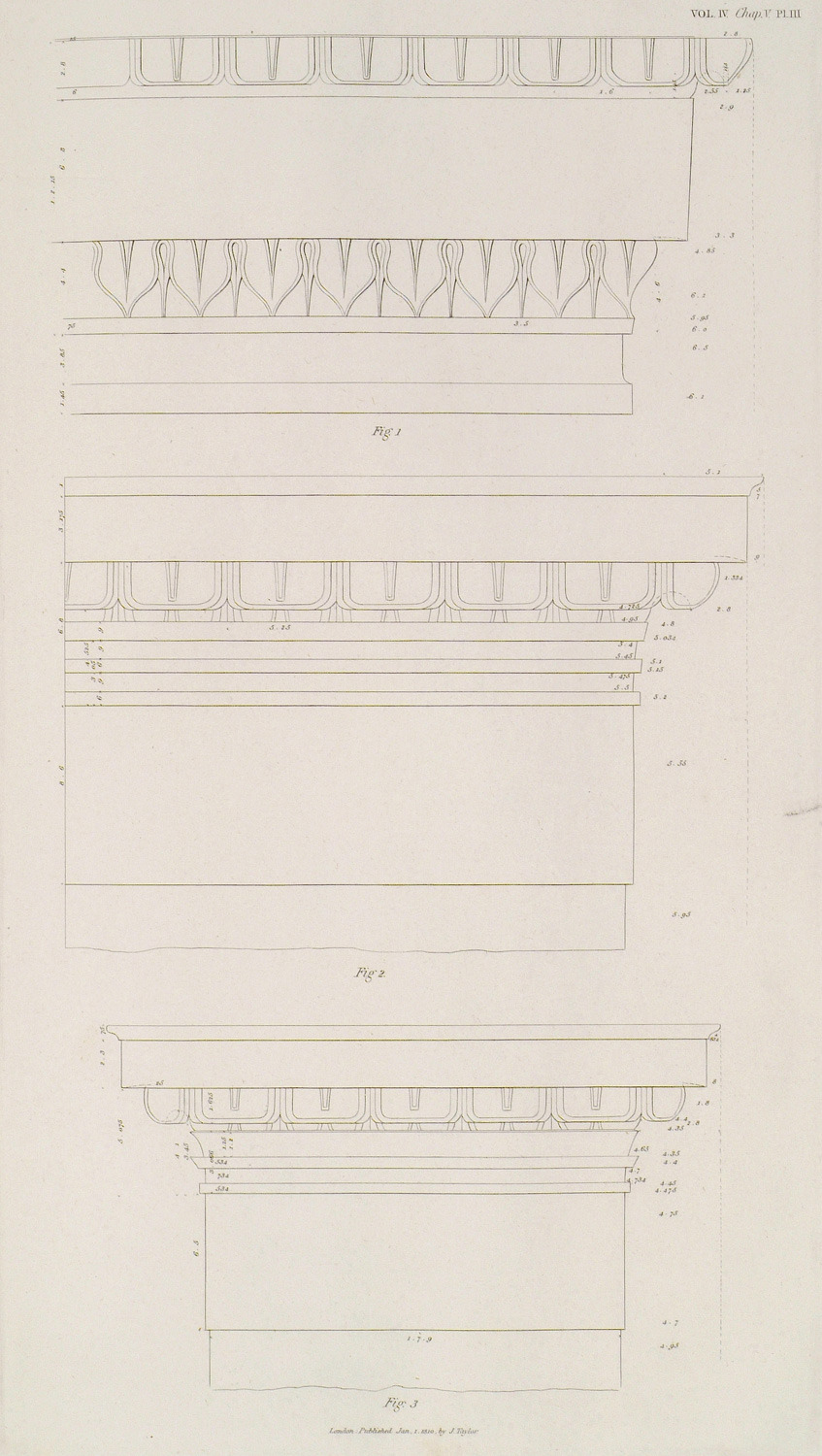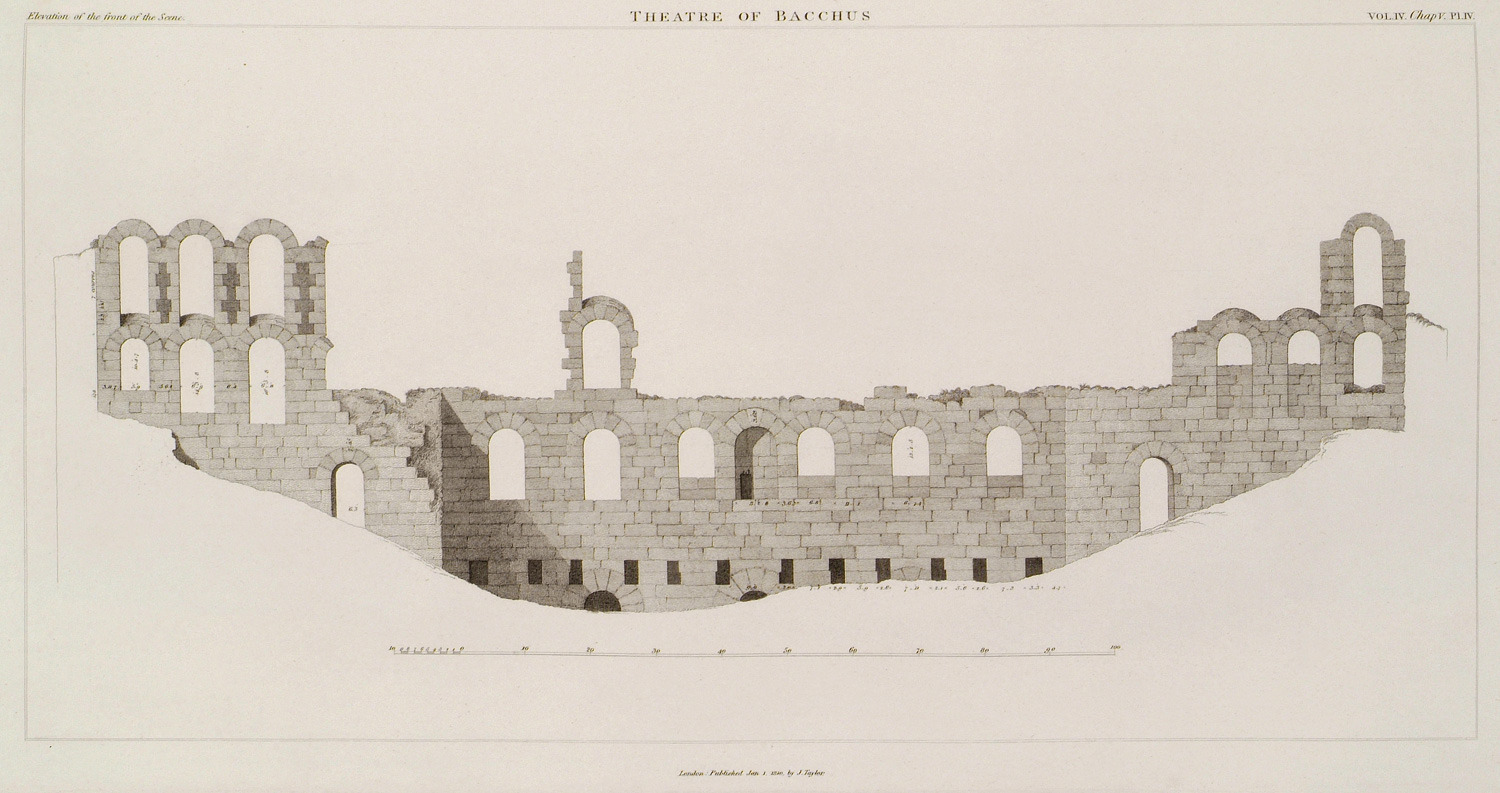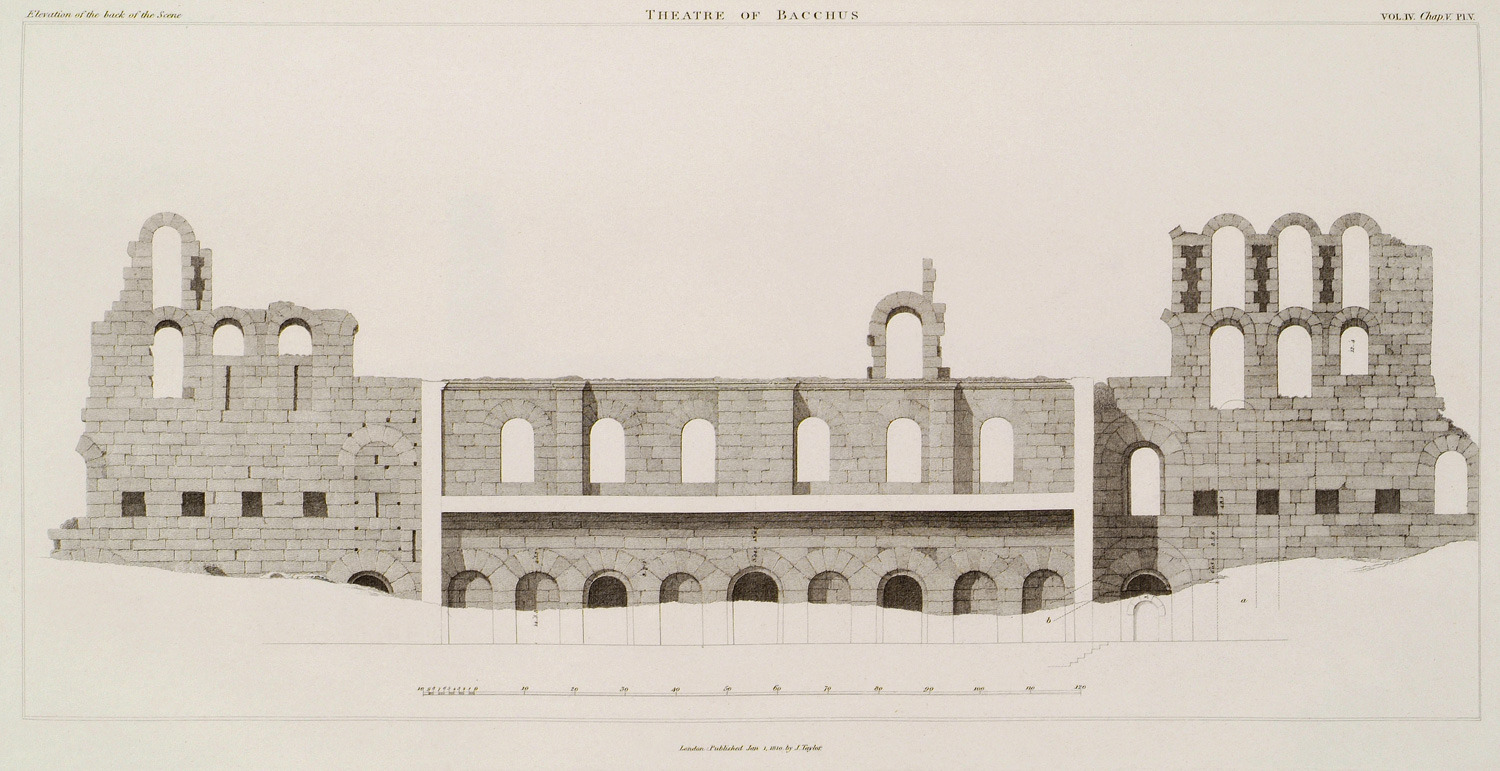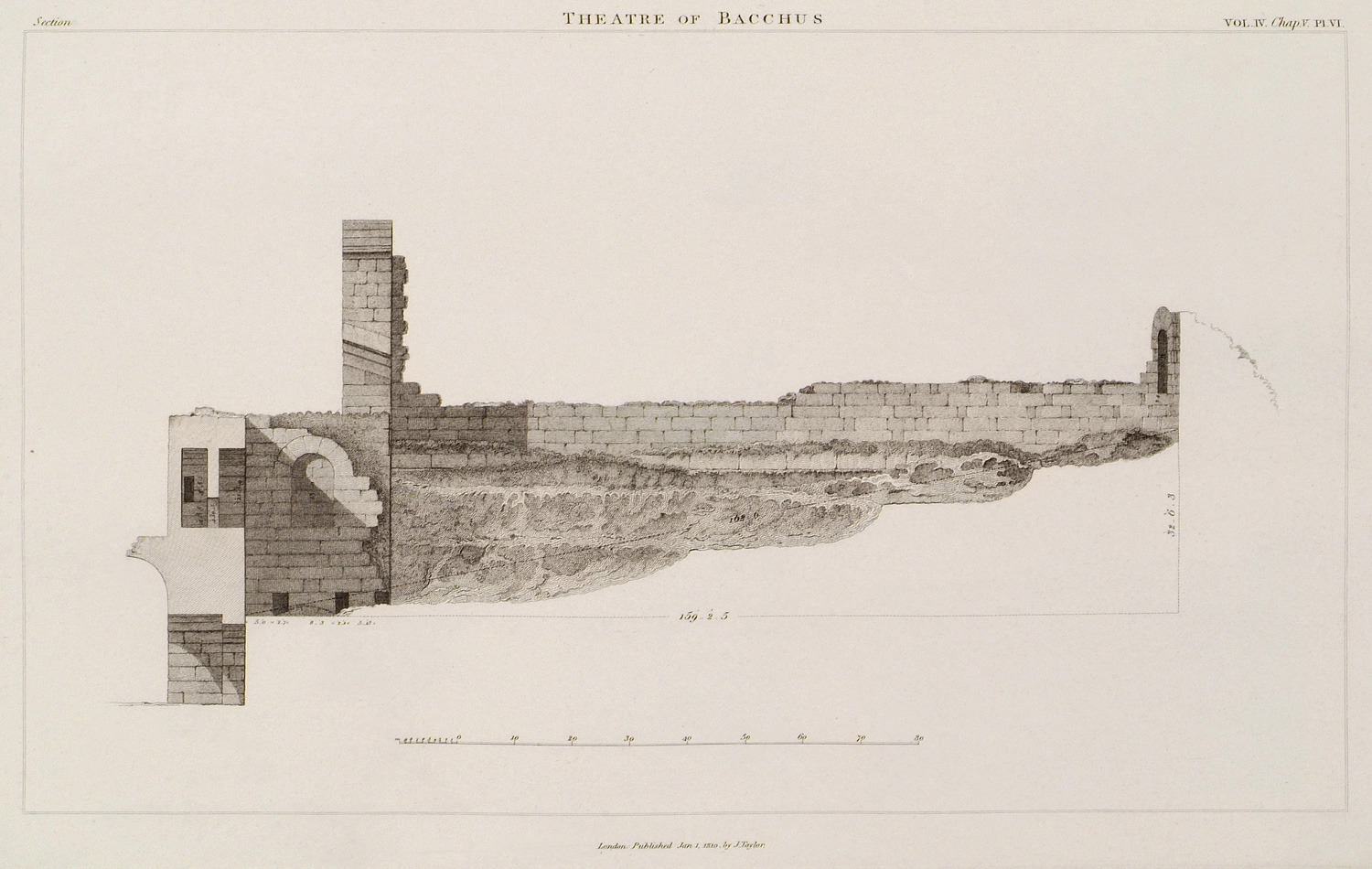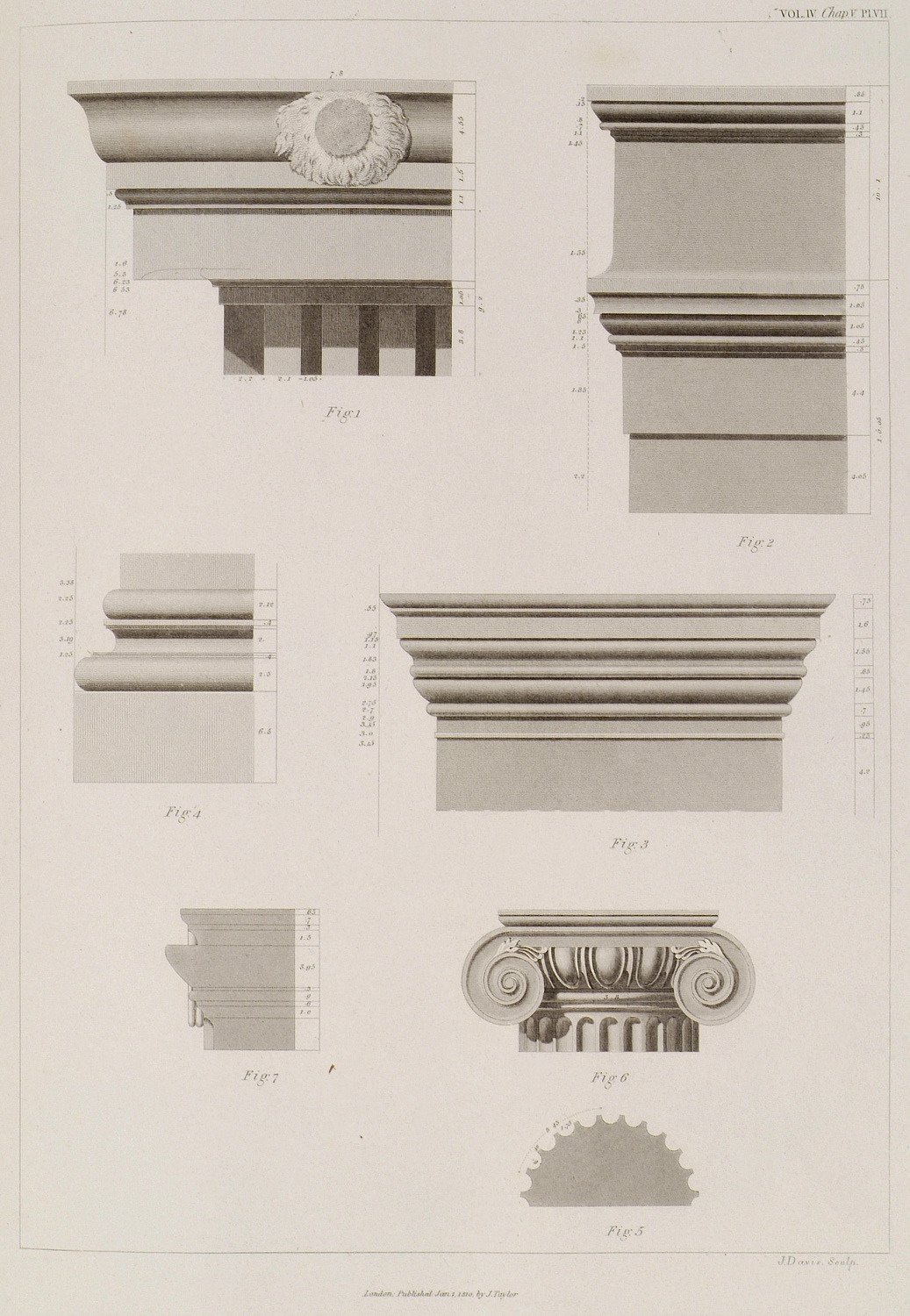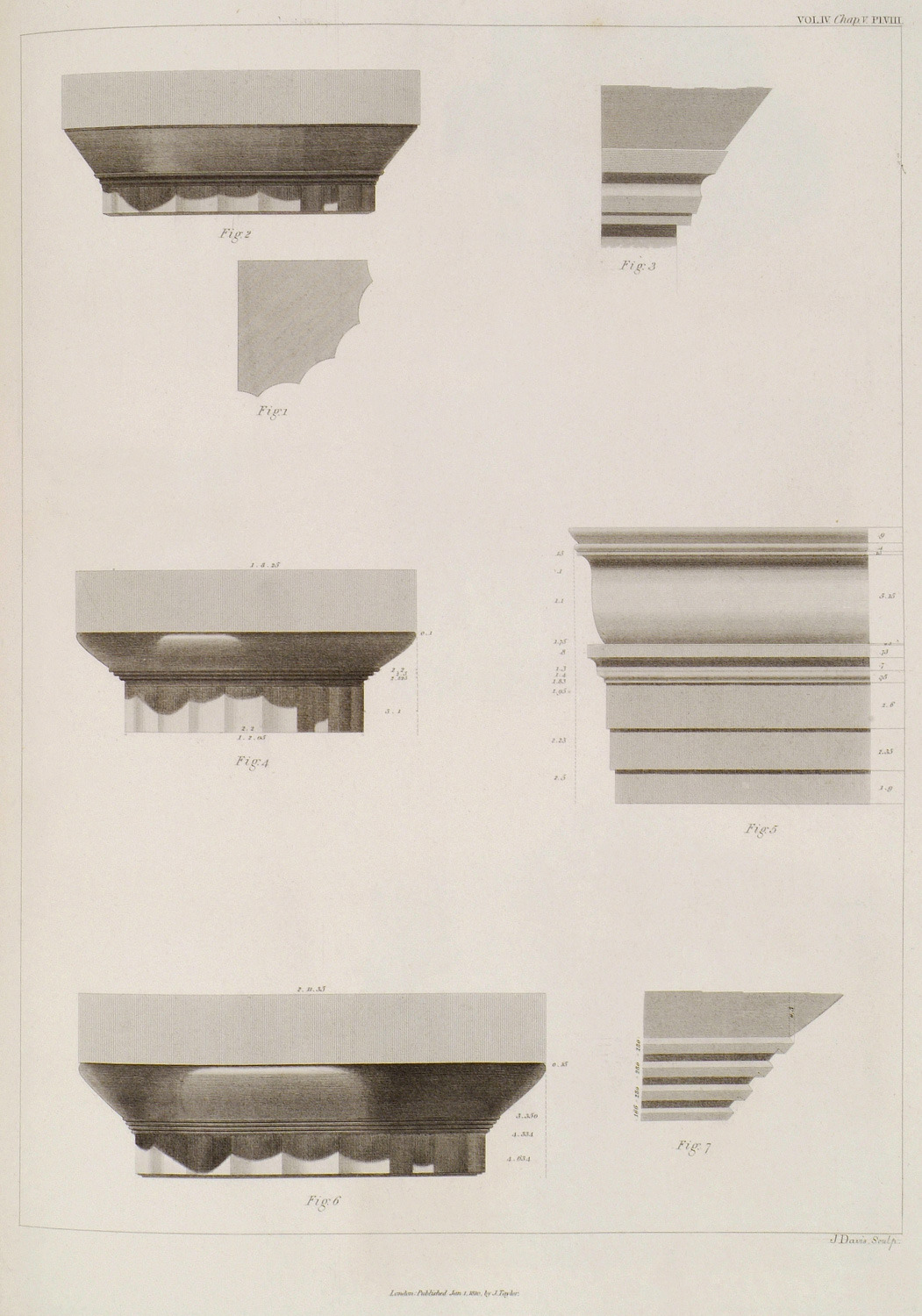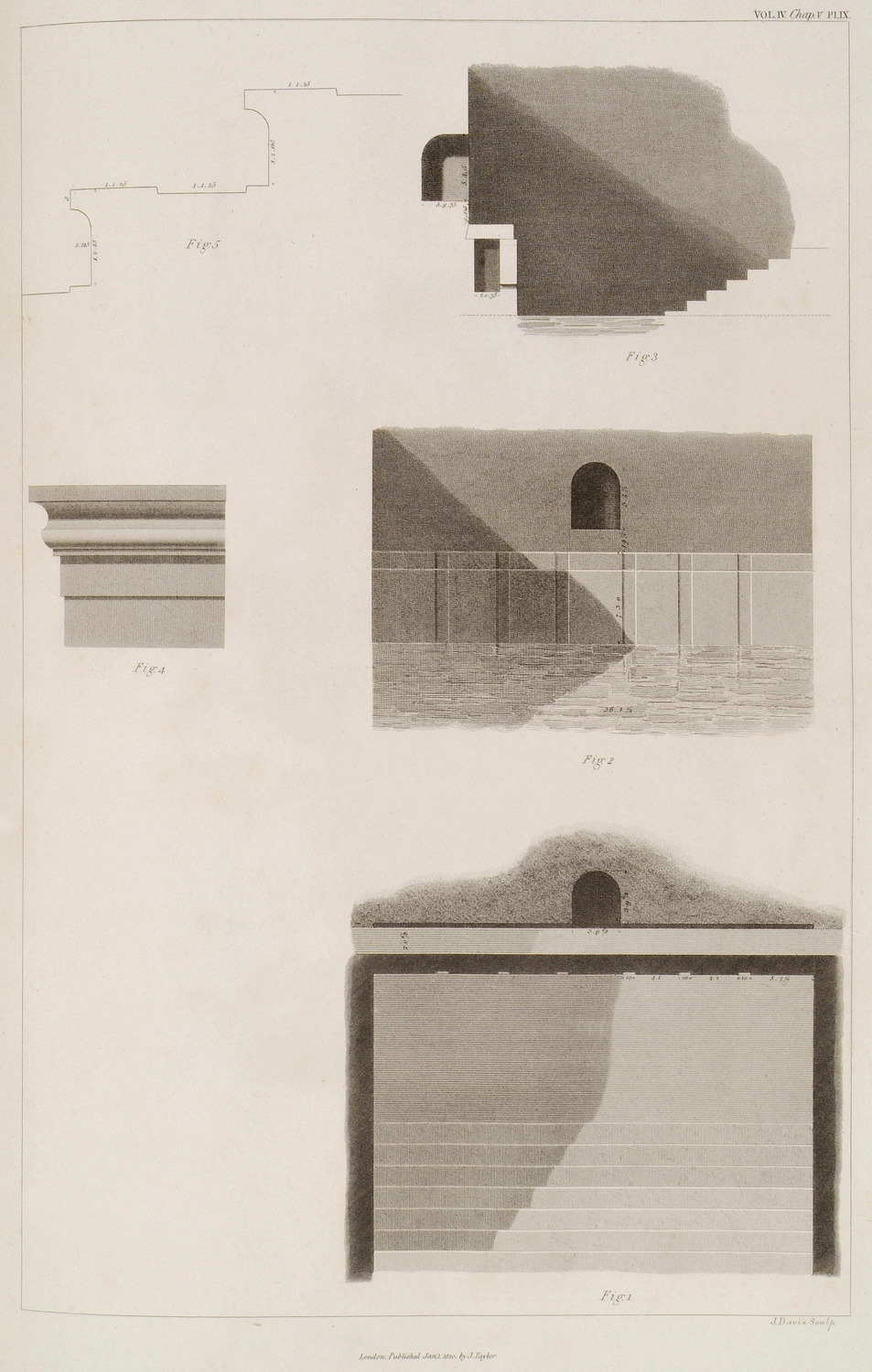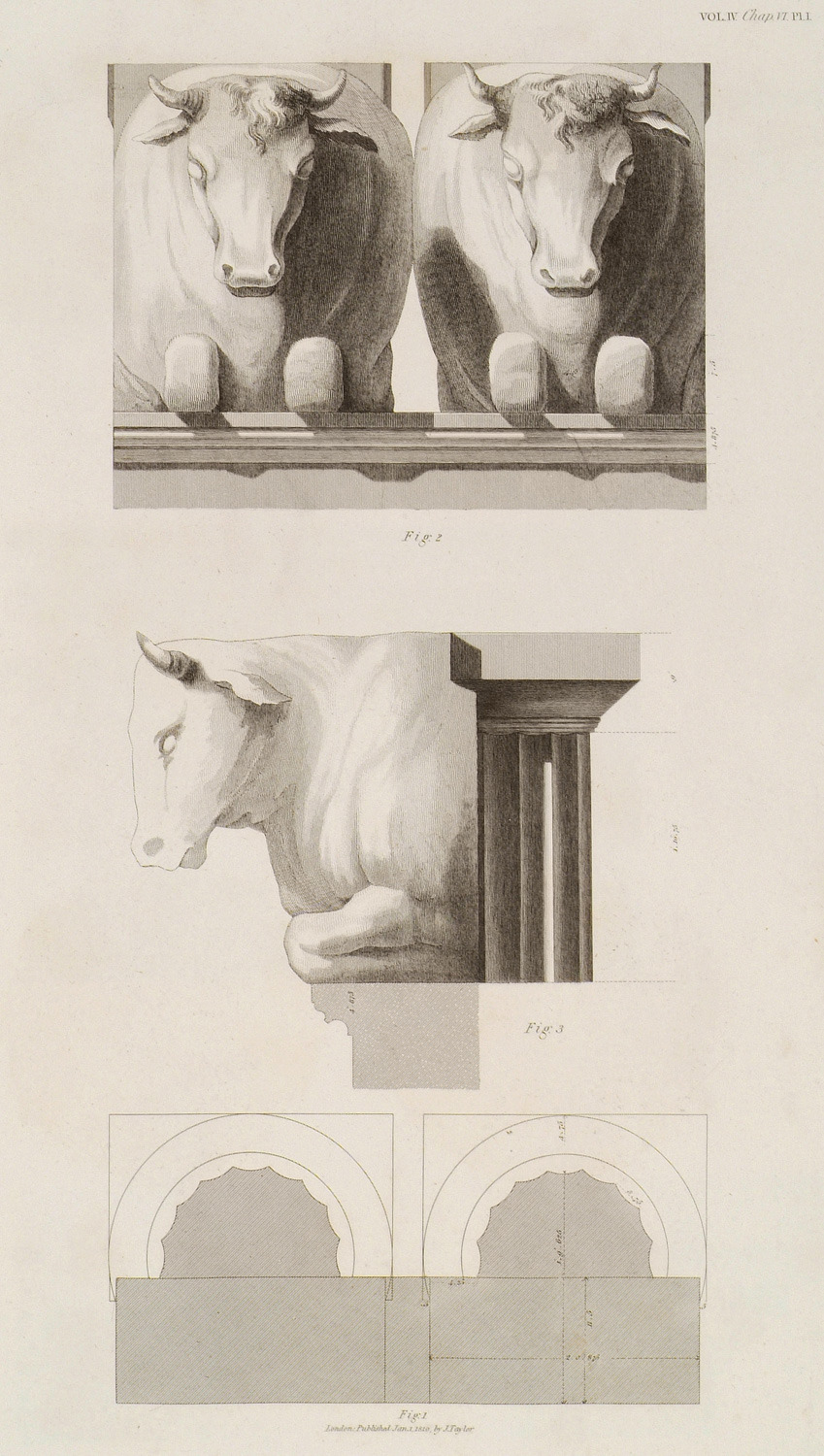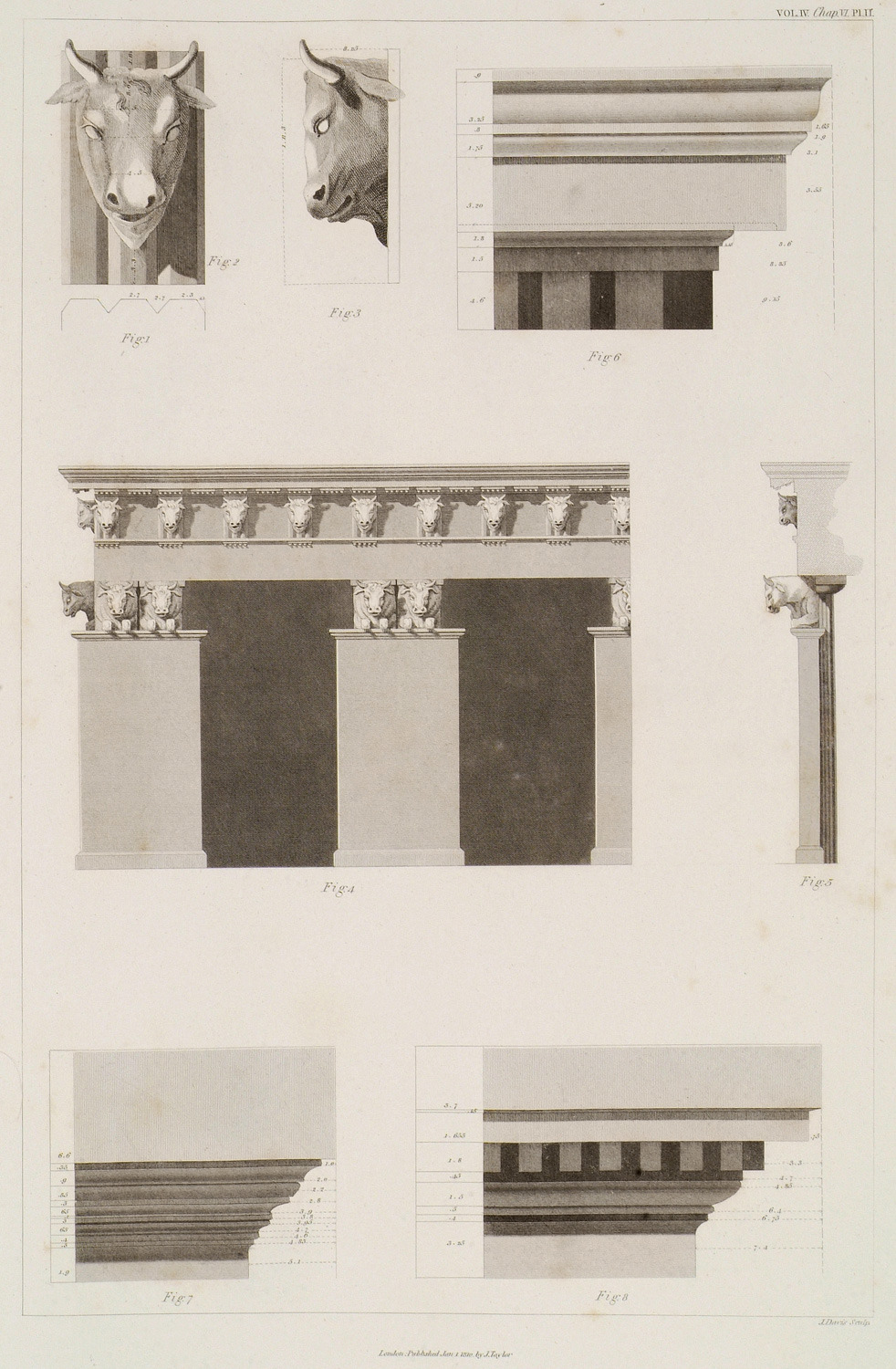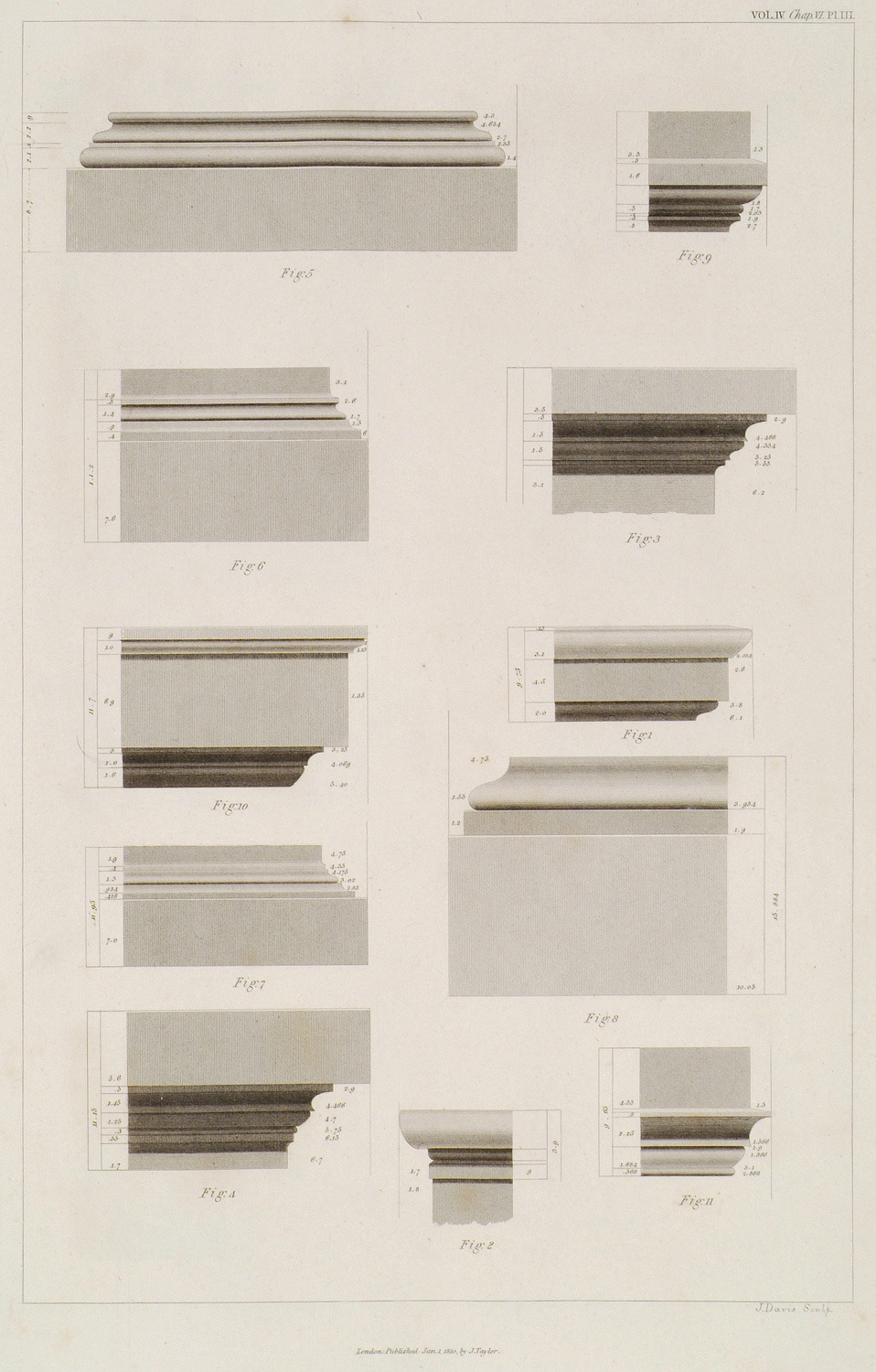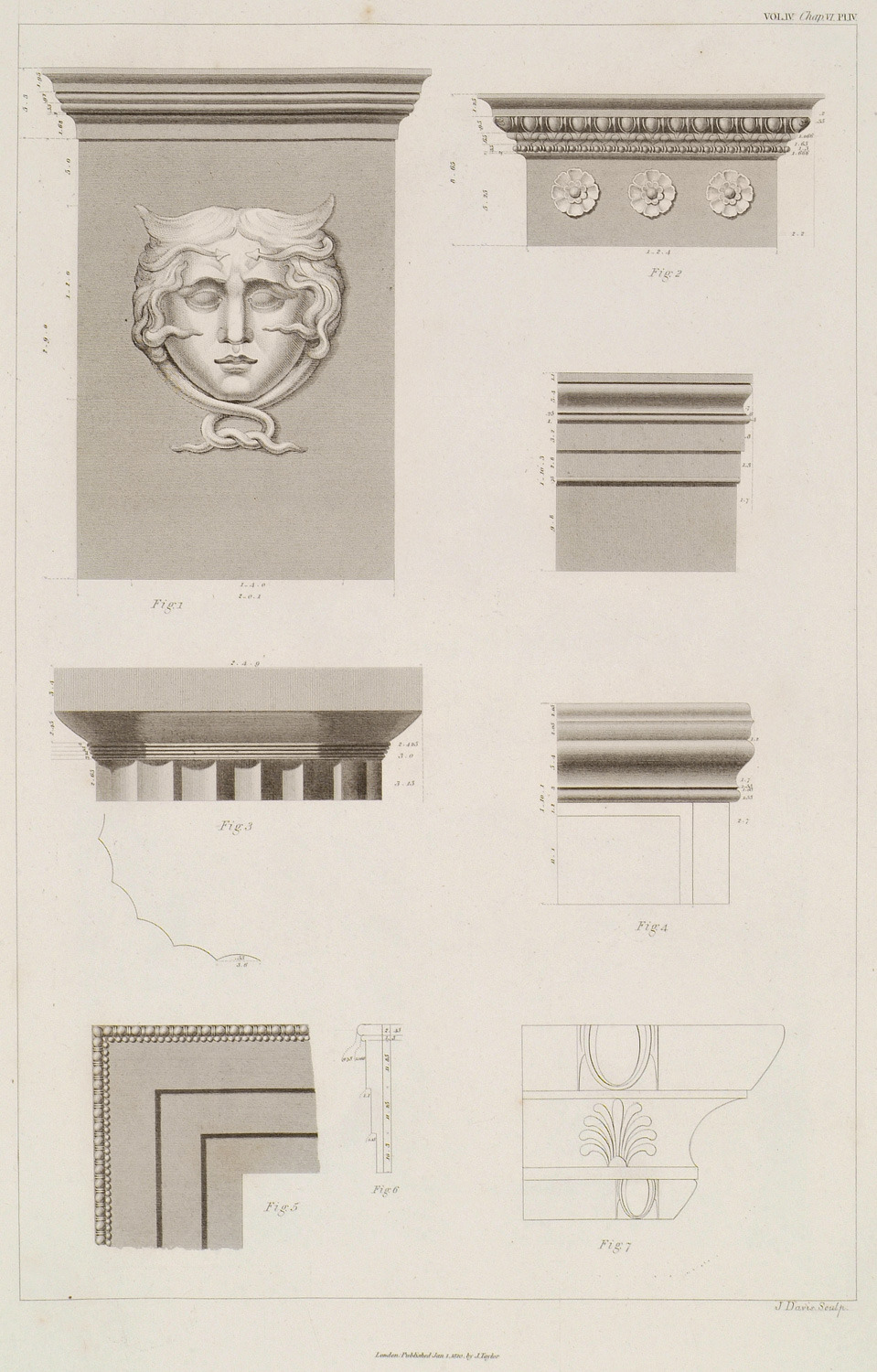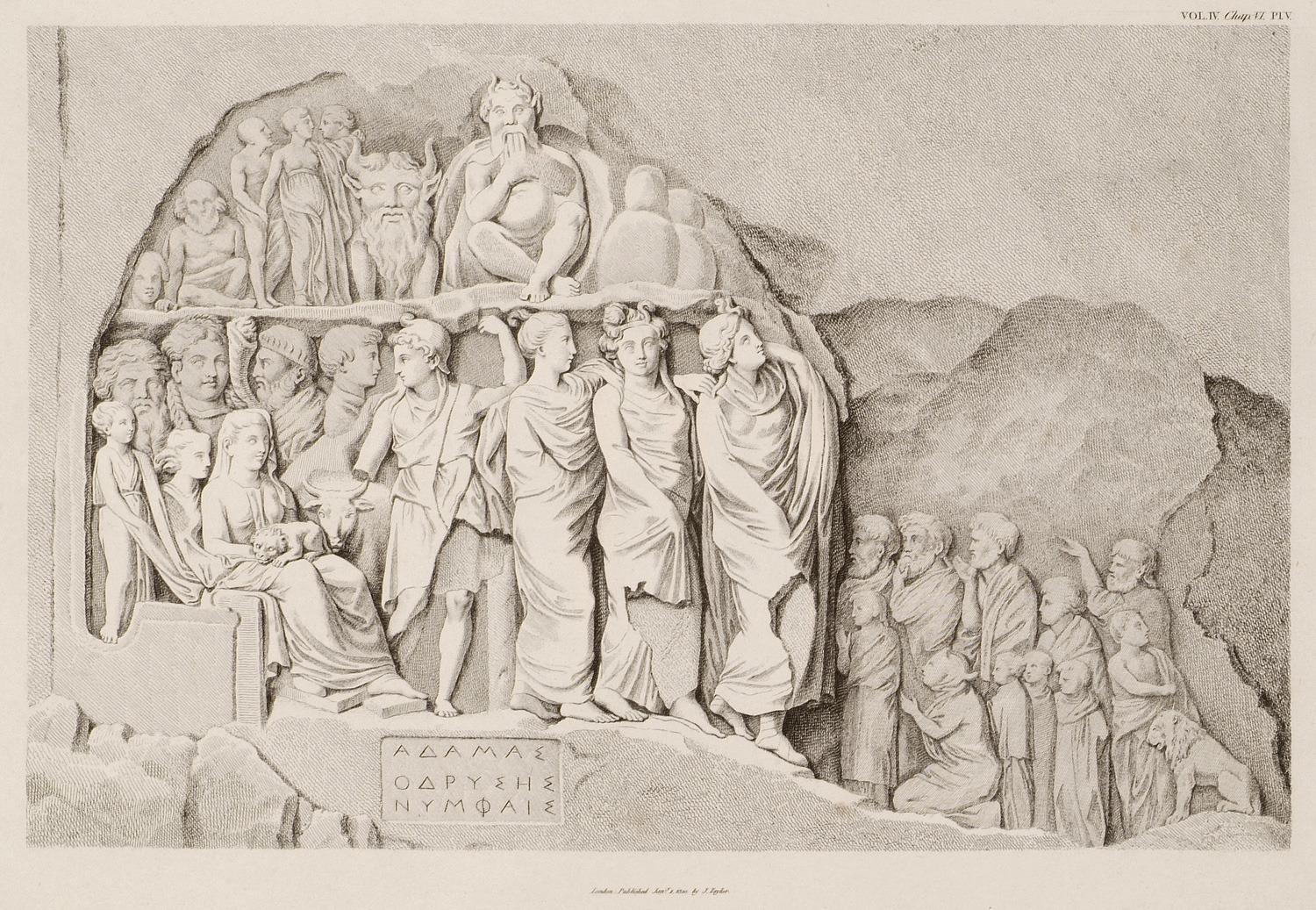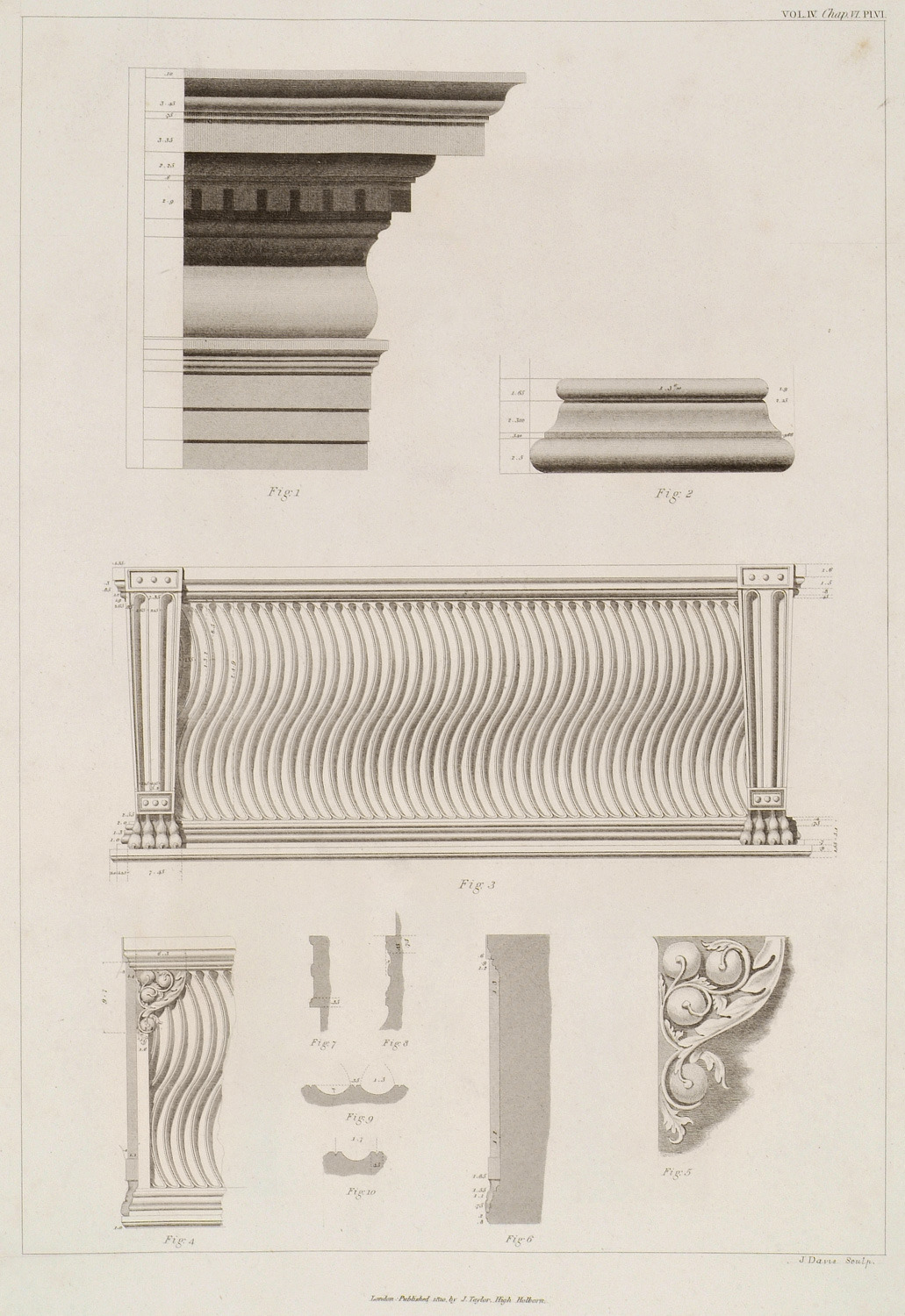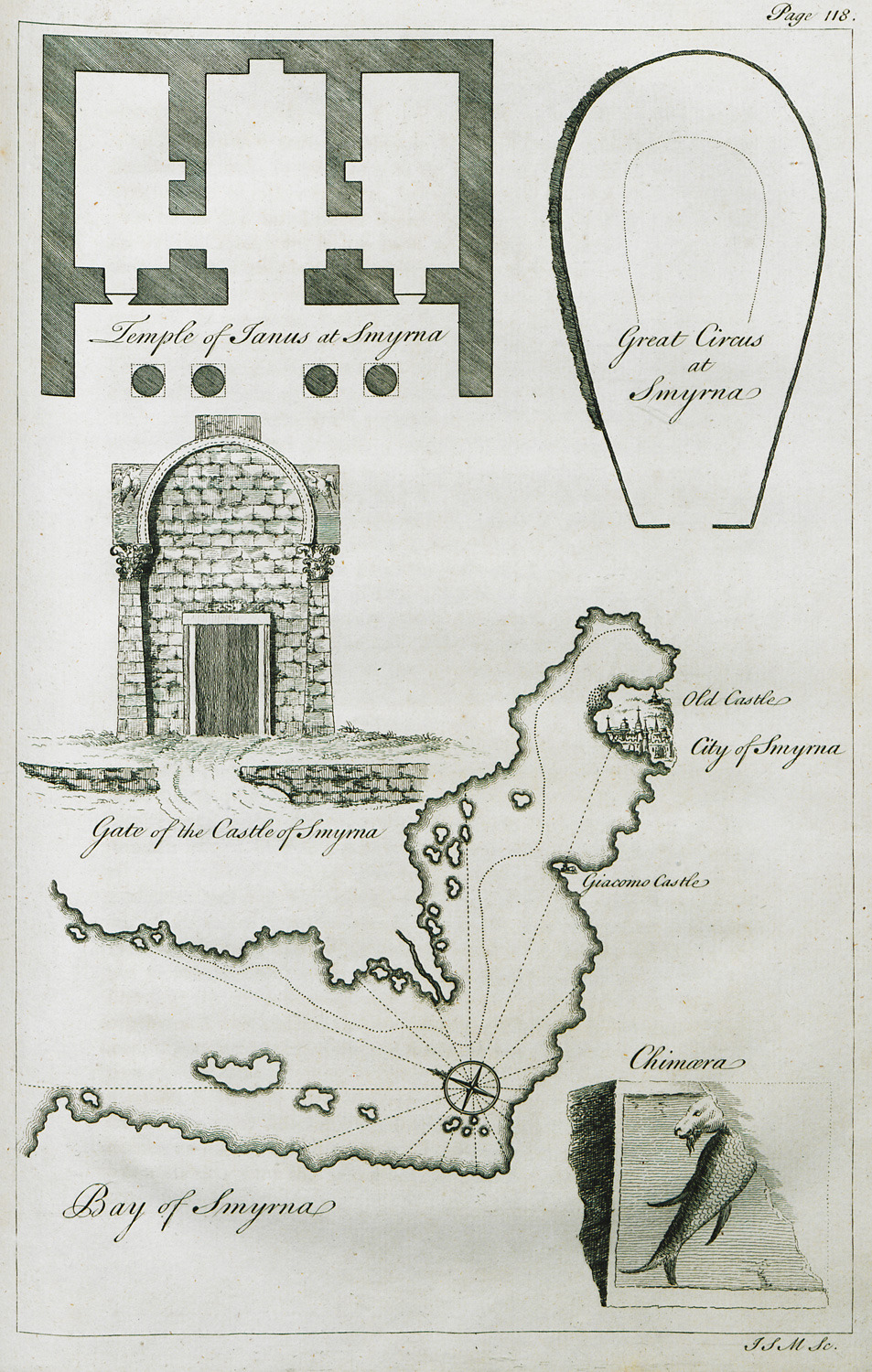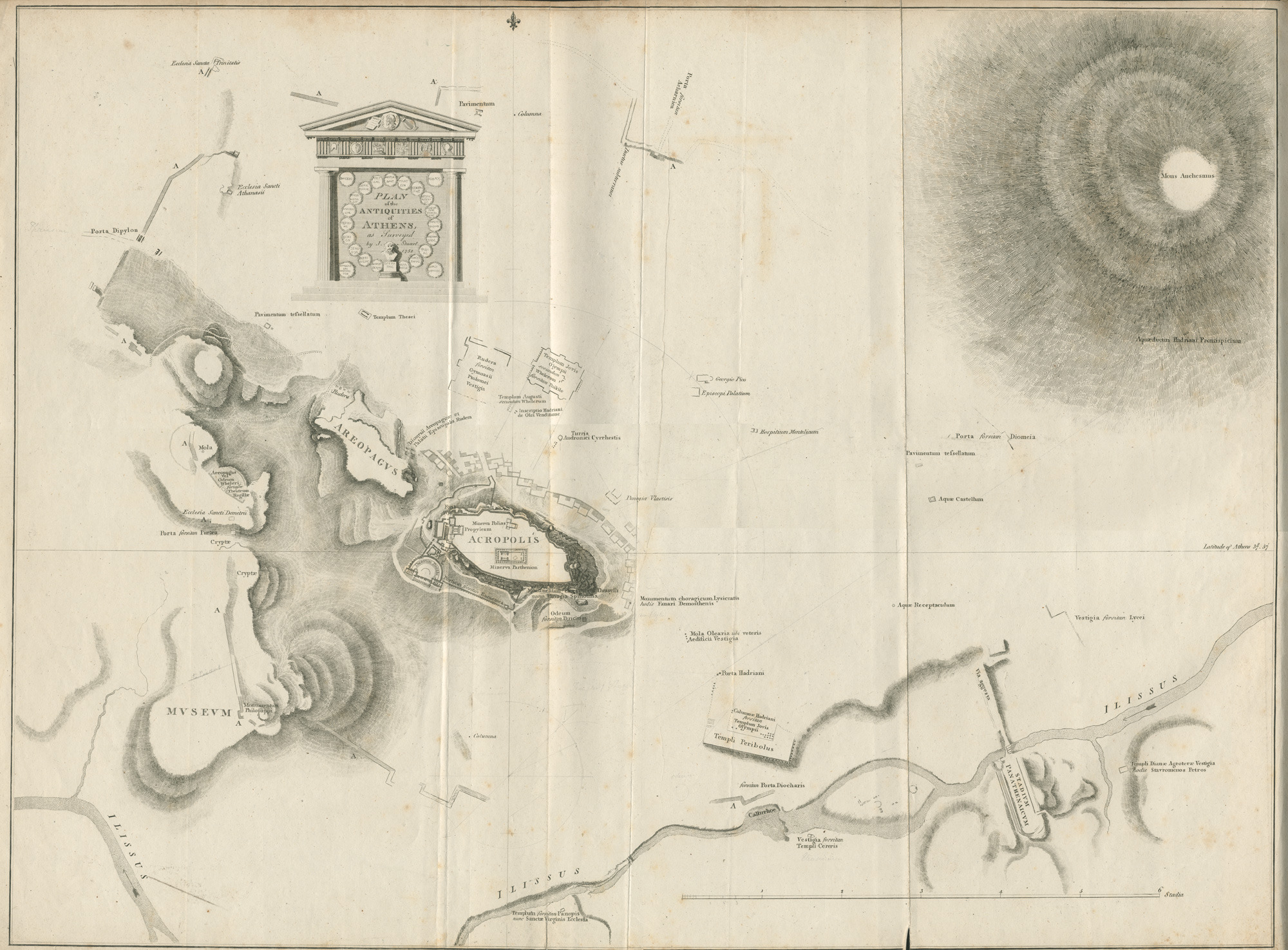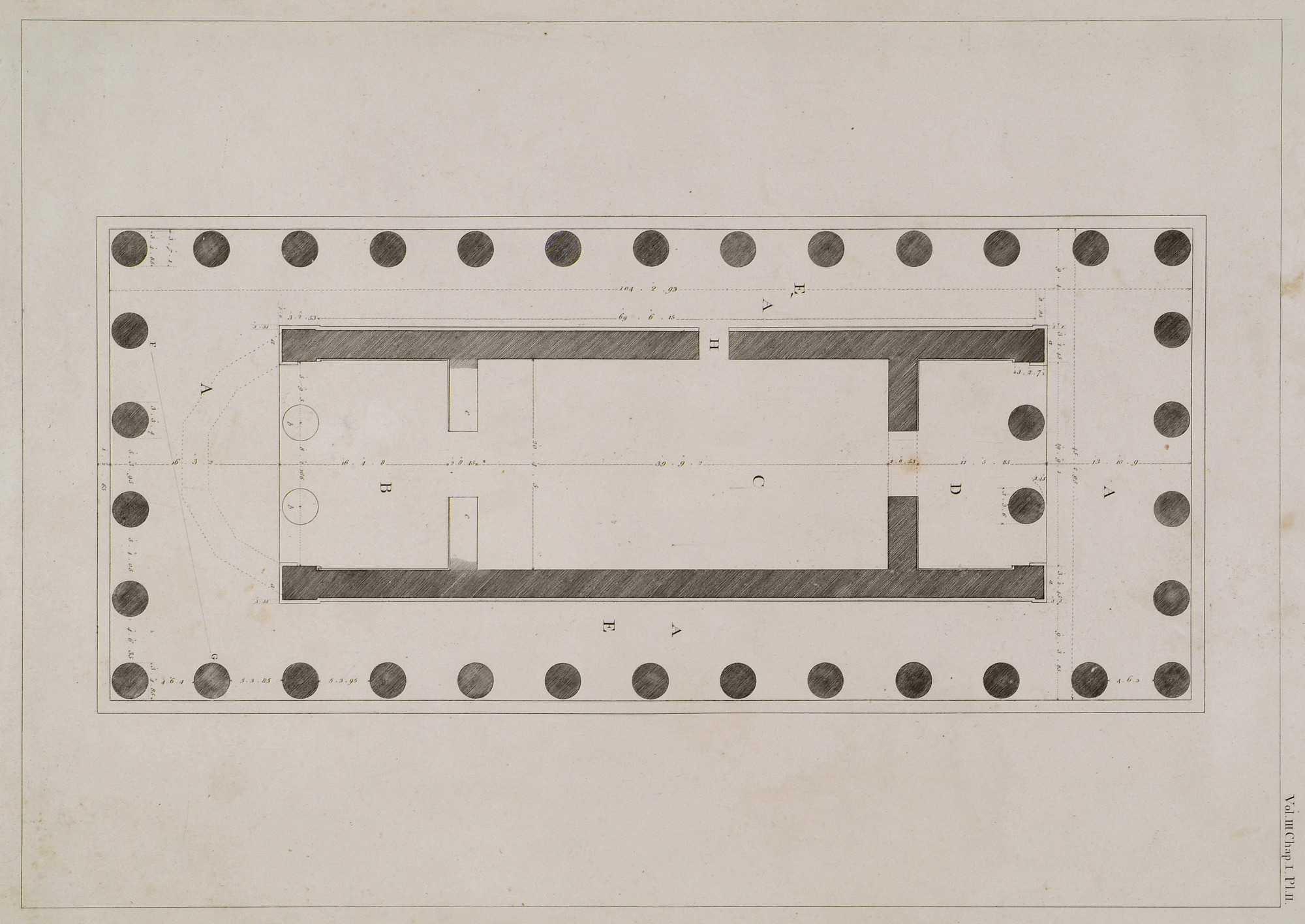Floor plans / Drawings (507 Subjects)
Temple of Rome and Augustus, Pula: Fig. 1: Plan and Fig. 2: Angular elevation of the capital.
Temple of Rome and Augustus, Pula: The base and pedestal of the columns.
Temple of Rome and Augustus, Pula: Fig. 1: The capital of the pilasters or antae. Fig. 2: The section of the capital. Fig. 3: The plan of the capital reversed, ans soffit of the architrave. Fig. 4: The base of the pilaster.
Plan of the Arch of Sergii in Pula, Croatia.
Elevation of the Arch of Sergii in Pula, Croatia.
The flank and section of the Arch of Sergii in Pula, Croatia.
Arch of Sergii in Pula, Croatia: Fig. 1: The capital and entablature of the columns. Fig. 2: Section of the capital. Fig. 3: Soffit of the Corona.
Outlines of architectural features from the Arch of Sergii in Pula, Croatia.
Arch of Sergii in Pula, Croatia: Fig. 1: Plan of the capital reversed. Fig. 2: Angular view of the capital.
Arch of Sergii in Pula, Croatia: Fig. 1: Plan of the columns shewing the termination of the flutes. Fig. 2: Base and pedestal of the columns.
Arch of Sergii in Pula, Croatia: Fig. 1: The middle compartment in the soffit of the arch. Fig. 2: The impost mouldings, with the foliage ornament on its face, and the archivolt. Fig. 3: The pedestals over the entablature.
Arch of Sergii in Pula, Croatia: Trophies in the frieze on the Flanks of the Arch.
The Parthenon: Fig. 1: Plan of the angle of the Temple, with the Lion's head. Fig. 2: Section of ditto. Fig.3: Capital of the antae. Fig. 4: Capital of the internal columns.
Erechtheion: Fig. 1: Capital of the antae, with the continued mouldings and ornaments of the front wall, and a section of the Lacunariae. Fig. 2: Elevation of the external side of the antae, shewing some difference in the ornaments. Fig. 3, 4, 5, 6: Different ornaments under the flowers. Fig. 7: Section of the ornament at a, fig. 3. Fig. 8: Ditto at b. Fig. 9: Plan of the ceiling of the portico.
Propylaea of the Acropolis of Athens: Fig. 1: Mouldings of the architrave internally. Fig. 2: Capital of the antae. Pinacotheca: Fig. 3: Capital of the pilaster.
Odeon of Herodes Atticus, Athens: Elevation of the front of the scene.
Odeon of Herodes Atticus, Athens: Elevation of the back of the scene.
Odeon of Herodes Atticus, Athens: Section of the theatre through the scene.
Fig. 1: Fragments of a cornice of the Ionic order found on the hill above the seats of the Theatre of Bacchus. Fig. 2: The interior face of an architrave which is built up in a modern wall under an arch of the bridge over the Ilissus. Fig. 3: The capital of a pilaster in the wall of the bastion fronting the Propylea. Fig. 4: Attic base on the convent at Colouri. Fig. 5, 6, 7: Plan, elevation and section of an Ionic capital, probably found in the church of St. George, on Mount Anchesmus.
ig. 1, 2, 3: Quarter plan, elevation, and part of a section of a Doric capital found in a convent at Daphne. Fig. 4: Doric capital in the church of Stauromenos Petros. Fig. 5: Fragments in the metope of Mendeli. Fig. 6: Doric capital found in a ruined church, on the left hand of the road from the town of Athens, to the Turkish burial ground, facing the gate of the Acropolis. Fig. 7. Fillets of the above capital.
Fig. 1: Plan of the Castalian fountain. Fig. 2: Elevation. The upright grooves in the wall do not admit an easy explanation. Fig. 3: Section. This shews the singular form of the niche. Fig. 4: Architrave of a door in a church at Delphi. Fig. 5: Profile of the seats of the Stadium at Delphi.
Fragments in the Isle of Delos. Fig. 1: Plan. Fig. 2: Front and Fig. 3: Side elevations of two bull's heads attached to the upper part of two columns.
Fig. 1: Plan of a Triglyph ornamented with Bull's heads. Fig. 2: Front elevation with the bull's head. Fig. 3: Side elevation. Fig. 4? Fig. 5: Supposed section of the complete order. Fig. 6: Cornice of a building on the left hand of the temple of Apollo. Fig. 7&8: Mouldings, probably of altars.
Other fragments of Delos. Fig. 1 & 2: appear to be capitals of Pilasters. Fig. 3& 4 are probably altars. They were found among the ruins of the Portico of Philip. Fig. 5, 6, 7 & 8 Bases of pilasters or of antae. Fig. 9, 10& 11. Other fragments of mouldings.
Fragments of the Isle of Paros. Fig, 1: Altar with a horned head. Fig.. 2: Altar, with roses. Fig. 3: Doric Capital. Fig. 4: Mouldings. Fig. 5: Architrave of a door. Fig. 6: Section of ditto. Fig. 7: Moulding.
Sculpture in the quarries at Paros.
Fragments from various Places. Fig. 1: Ionic entablature at Palaeopolis in Andros. Fig. 2: Base found at Scopelos. Fig. 3: Side elevation of a Sarcophagus at Scopelo, which serves at present as a cistern, or rather as a watering trough. Fig. 4: Part of the end of this Sarcophagus. Fig. 5: Ormanent at the angle. Fig. 6: Section of the mouldings of the side. Fig. 7: Section of the upper tablet at the angle. Fig. 8: Section of the lower ditto above the claw. Fig. 9&10: Section of the flutings.
1. Temple of Janus at Smyrna. 2. Great Circus at Smyrna. 3. Gate of the Castle of Smyrna. 4. Bay of Smyrna. 5. Chimaera.
Plan of the Antiquities of Athens as surveyed by J. Stuart.
Plan of the Temple of Hephaestus (Theseion), Athens.


